AUGUST 2024
ISSUE #16




THE TASTE DOCTORS
Dr. Benoît Marsan, Dr. Nic Spencer, Dr. Don Livermore
MAESTRO OF THE MOLECULE
François Chartier


AUGUST 2024
ISSUE #16




THE TASTE DOCTORS
Dr. Benoît Marsan, Dr. Nic Spencer, Dr. Don Livermore
MAESTRO OF THE MOLECULE
François Chartier

SEPTEMBER - NOVEMBER


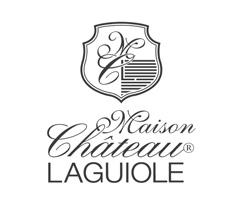
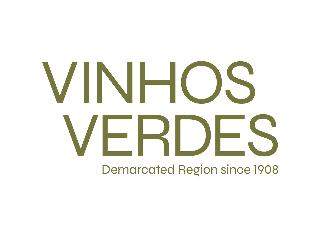





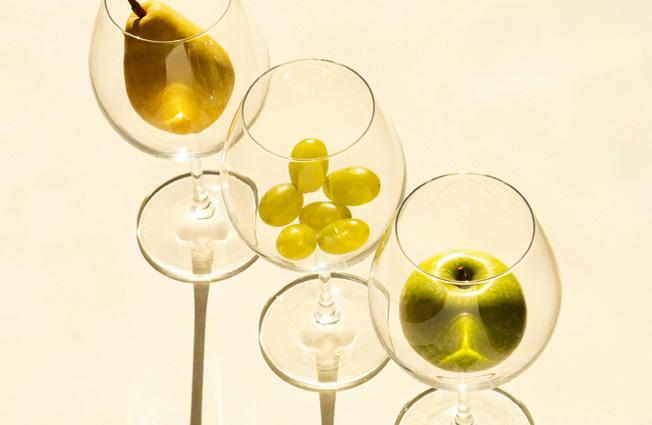

Published by: Association de la Sommellerie Internationale
Editor, Content Manager: Mark DeWolf
Partnership Management: Ana Sofia Oliveira
Marketing & Communication: Xeniya Volosnikova
Administrative Assistant: Claire Monnier
Copy Editing: Nina Basset
Translation: Michèle Aström Chantôme, Manuel Negrete
Design / Layout: Carissa Botha
Photography: 123RF, Jean Bernard, Hugo Pinheiro, Adrijan Pregelj, Perry Jackson, Stölze Lausitz, iStock, Unsplash
Cover Photo: The chemical compounds that make up a glass of wine are numerous (Photo: Stölze Lausitz)
Contributors:
Francois Chartier, Mark DeWolf, Irem Eren, Don Livermore, Benoit Marsan, Joseph Mounayer, Nic Spencer, Natalia Torres, Myles Trapp, William Wouters
ASI Executive Board
President: William Wouters
Secretary General: Beáta Vlnková
Assistant Secretary General: Ivo Dvorak
Treasurer: Philippe Faure-Brac
Assistant Treasurer: Samuil Angelov
Vice-president for Asia & Pacific: Saiko Tamura-Soga
Vice-president for Africa & Middle East: Michèle Aström Chantôme
Vice-president for Europe: Piotr Kamecki
Vice-president for the Americas: Matias Prezioso
Magazine inquiries:
Mark DeWolf, ASI Content Manager markdewolf@asi.info
General Inquiries: www.asi.info | info@asi.info

William Wouters, President ASI
The days of sommeliers simply memorising the characteristics of major wine styles or having a cheat sheet of food and wine pairings, have passed. I am constantly amazed at the sheer mass and depth of knowledge required to be a top sommelier in the modern age. Not only do sommeliers now have to understand the art of sommellerie, displaying empathy and understanding of their customers’ needs, but they must also understand the science behind the process of making wine, beer, sake and spirits. Even the skill of matching food to drink, no longer as simple as beef with Cabernet Sauvignon or oysters and Champagne. One of the first to revolutionise the latter was Québécois sommelier François Chartier. The author of Tastebuds and Molecules, a book that seeks to find flavour bridges between food and wine, as a means of creating gastronomic synergies, introducing a new way

for sommeliers to think about the art and the science of pairing food and drink.
While the wine world is moving towards more natural methods, the scientific understanding of the wine industry has never been higher. It may seem counter intuitive, but it is only with a deeper understanding of the science that we can make better wine with less intervention. I should know as I am married to a winemaker with a degree in Chemistry, who makes non-interventionist wines. Contributing to our understanding of the science of wine are winemakers and scientists. The study of wine is a passion for Dr. Nic Spencer, a British-born chemical engineer, who spent the past thirty years as a Professor of Surface Science and Technology at ETH Zürich, where he was a world leader in the field of tribology; the science of interacting surfaces in relative motion. While always interested in wine, in recent years Dr. Spencer has taken to serious wine study, completing the WSET Diploma and focusing much of his research on the interaction of saliva and wine. In doing so he is helping sommeliers, and the broader wine world, understand how individual palates can provide different impression of tannins and acidity amongst
“While the wine world is moving towards more natural methods, the scientific understanding of the wine industry has never been higher.”
other things. He is also seeking to improve the texture of non-alcoholic wine via his research, a segment of the industry that is increasingly important. To further our investigation of non-alcoholic wine, in this issue we interview Irem Eren, a Master of Wine student who works in the non-alcoholic drink space. Similarly, Université du Québec Professor of Science and Wine Dr. Benoît Marsan is both an avid wine enthusiast and a renowned wine chemistry expert. His wine courses, taught at the ITHQ in Montreal, have been applauded by sommelier students and his research has helped to qualify why the wines made from grapes grown in volcanic soil typically display a mineral-like character. Enjoy our deep dive with Dr. Marsan on the chemistry of wine aromas and flavour.
In this edition we also explore the science behind sake and whisky. With the assistance of our partners the Japan Sake and Shochu Makers Association (JSS) we take a deep dive into the chemistry of taste of sake, investigating the impact of rice selection, polishing, koji, fermentation temperatures and more on aromas and flavour. It’s a deep dive into a subject that is increasingly more important for sommeliers as premium sake becomes a more integrated part of our global beverage selections. Also featured in this edition is Dr. Don Livermore, Master Blender for J.P. Wiser’s, and an expert in whiskey-making and aging with a bachelor’s in microbiology — as well as an MS and Ph.D. in Brewing and Distilling from Edinburgh’s Heriot Watt University. In this edition you’ll discover what is behind the aromas of your favourite whisky styles.

In our efforts to continue to bring new knowledge and understanding to our top sommeliers, this September we will have another of our ASI Bootcamps. This time it will be in Seville, Spain and will be hosted by the Union of Spanish Sommelier Associations (UAES), and under the directorship of its president, Rafael Bellido. Rafael, or Rafa as many know him, is himself a world class wine educator. We are very proud to host this next bootcamp in Spain in partnership with Rafa and his team. It will undoubtedly be an event full of deep educational offerings and an opportunity for our sommeliers to get firsthand insights of the modern evolution of the Spanish wine and gastronomy industries. I encourage you to read our Member Spotlight feature on the UAES to discover how they are training Spanish sommeliers for the future.
“Even the skill of matching food to drink, no longer as simple as beef with Cabernet Sauvignon or oysters and Champagne. One of the first to revolutionise the latter was Québécois sommelier François Chartier.”

Mark DeWolf
Mark DeWolf, Content Manager ASI Editor, ASI Magazine markdewolf@asi.info
Iconsider myself someone that bridges the romanticism of the wine world with a curiosity of the science behind the liquid we all love. Perhaps this balance is in my very DNA. My sister is a biochemical engineer, a tenured professor and a Dean of Sciences at Montreal’s Concordia University, while my brother is a designer, having spent much of his working life in New York and Washington DC both as a graphic artist and museum curator, working with likes of Annie Leibovitz, amongst others, on exhibitions. I chose Economics and Math for my university education, but the lure of cooking, beer, wine and hospitality lured me into a life that is both creative and calculated. I see the world of wine and sommellerie as the ultimate balance between science and art. Indeed, the finest liquids are masterpieces with layers and depths of flavour curated by artist winemakers. Yet, those very winemakers who craft these liquid versions of The Starry Night and Mona Lisa, are nothing without a deeper understanding of their paint (the grapes and grains used for fine wine, spirits and beer), the expertise and understanding of brush strokes (fermentation) and how to layer and enrich their works with the fine details that take a piece of art from painting to masterpiece. The latter, I liken that to the winemaker’s decisions post fermentation, such as if and how to age on the lees or barrel, or both.
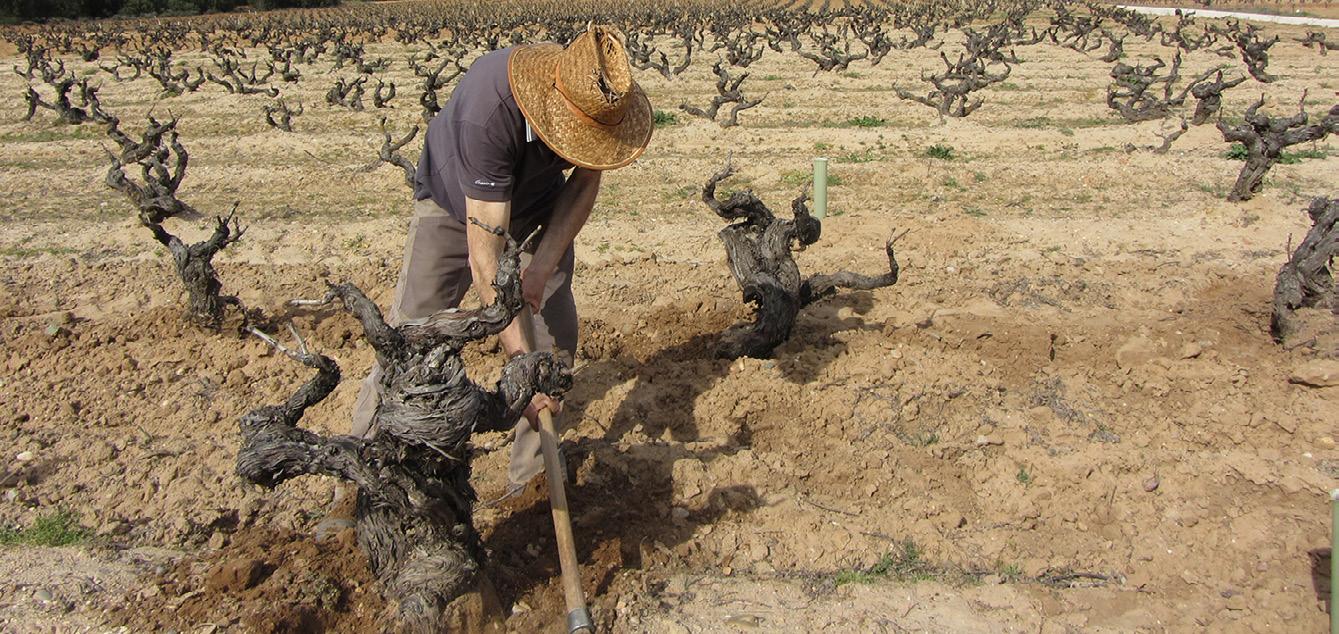
“I see the world of wine and sommellerie as the ultimate balance between science and art. Indeed, the finest liquids are masterpieces with layers and depths of flavour curated by artist winemakers.”
Food and drink pairing for me is another place where art and science merge. I think most sommeliers’ brains are engrained with lists of classic pairings, and an understanding of how the structure of food (fat, acid, sweetness) effects the structure of wine, and other beverages, and vice versa. François Chartier, via his work with Ferran Adrià, and the publication of his first book, Tastebuds and Molecules, strove to deepen the science of food and wine pairing
via his principles of creating flavour bridges based on the molecular composition of both wine and food. Chartier, who is featured in this edition of ASI Magazine, undoubtedly added a layer of depth, rooted in science, to the food and drink dynamic. Yet, I still believe there is also an emotional marriage of food and drink. If great drinks are like great pieces of art, they evoke emotions and feelings. The same is true of great dishes and great food and drink pairings. The artist in me also says there must be a connection of the soul of the drink with the soul of the food. In the end the brilliance of the food and drink pairing is not the artist who creates the pairing, but is expressed via the end user, the diner. Did the match strike an intellectual and emotional chord? None of us should ultimately care if the pairing decision was rooted in science or emotion, or both. It was a fun exercise to see how François Chartier pairs a dish, versus a traditional sommelier. Read more about Chartier in Myles Trapp’s article Maestro of the Molecule and decide whose pairings you enjoy most in our Make Me a Match feature.
Another artist, technician that does not get enough credit is our
magazine designer, Carissa Botha. For close to two years, the South Africa resident has been taking the words of sommeliers around the globe and creating visual artwork via her page layouts. Indeed, like wine, the result is only as a good as the input, but also like wine, without a great craftsperson, the finished product can easily be spoiled. Carissa has been an integral part of making ASI Magazine the world class publication it is.
This issue I encourage you to embrace both the art and science of sommellerie. As you read the pages of this edition think about how you can merge your theoretical, scientific understanding of food and drink with a deeper emotional, empathetic understanding of your customers. Ultimately it is your customers, the diners in our restaurants, and the visitors to our wine tasting rooms, who are looking for an emotional connection, a memory of a cherished moment of time with a glass of wine, cocktail, sake, beer or spirit. Most of my most memorable food and drink experiences have been both rooted into logical, but enhanced by emotions, whether it is the location or simply a pairing that transcended the sum of it parts. I think of those
experiences such as eating lamb from Aranda del Duero grilled over 100-year-old Tempranillo vines in the company of a rich Ribera del Duero (Bodegas Casajus) standing in an ancient, isolated village. Was it science that brought the food and wine together so perfectly or simply a cherished moment of time and place. Are braised beef cheeks cooked with Brunello wine a flavour link as described by Chartier, or the romance of sitting at a restaurant in Montalcino the valley and its vineyards below. Both are great examples of logic and environment coming together. As for the sum being greater than its parts, I think of the taste of a mature, bottled aged Chateau Tahbilk Marsanne –an inexpensive wine from Australia – whose stone fruit, honeysuckle and lime notes married perfectly with the simplicity of a coconutbased shrimp curry.




Benoît Marsan is an honorary professor at the Université du Québec à Montréal (UQAM) and holds a doctorate in chemistry. He was trained in professional wine tasting by Bertrand Eichel, Quebec's Best Sommelier 2009n ACSP (CAPS). Marsan founded in 2015. He has taught wine chemistry to professionals and the public, contributing significantly to
courses at the Institut de tourisme et d'hôtellerie du Québec (ITHQ) from 2013 to 2016. His passion for the subject led him to create a popular wine chemistry course at UQAM, which won him an award for teaching excellence. In 2017, he developed an innovative chemistry course for sommeliers at ITHQ and contributed to a workshop on minerality for top sommeliers.

Dr. Marsan gives seminars around the world, including his Wine Chemistry for Professionals seminar. His recent work focuses on the impact of volcanic soils on wine, in collaboration with John Szabo MS and Dr. Christian Coelho We couldn't imagine anyone better than Dr. Marsan to explore the chemistry of wine.
ASI: We've entitled this edition of ASI Magazine 'The Chemistry of Taste'. To what extent do our other senses play a role in the overall perception and understanding of a wine?
Dr. Benoît Marsan (BM): It's true that the sense of smell is very much in demand when tasting a beverage such as wine, or even a dish. In fact, around 70 per cent of the taste of wine comes through olfaction, including the orthonasal (through the nose) and retronasal (through the back of the mouth) sensory pathways. In the latter case, the perception of odorous molecules is modified by mouth temperature, reactions with saliva and interaction with the different flavours and textures of the wine. Depending on the chemical composition of the wine, which is highly complex, our genetics, which have a major influence on individual olfactory perception thresholds, and our medical condition, this can mask, attenuate, amplify or chemically modify certain aromas, as well as sometimes bringing out new ones. Olfactory perceptions also generate emotions. That said, the overall perception of a tasted wine is the result of the stimulation of all our senses, which send an impressive amount of information to the brain, which processes it, checks that it matches our experience, and when necessary, reconstructs the taste of the wine. Pascaline Lepeltier's recent book (Mille Vignes, Penser le vin de demain) provides more information on this fascinating subject.
Sight takes precedence over smell and is the sense that guides the other stages of tasting by anticipation. The proof is that if you close your eyes, or use a black glass, brain activity is intensified to compensate for the lack of anticipation normally caused by the colour of the wine. Tasting a rosé wine in a black glass can be quite disconcerting. Depending on previous experience, the taster may tend to describe a certain type of white wine, an orange wine or even a light red wine before even
thinking about a rosé wine. Once the colour is revealed, the taster reorients his or her perceptions to better match what he or she knows about rosé wines. On the other hand, adding an odourless, tasteless red colouring agent to a white wine misdirects the taster towards the organoleptic notes associated with a red wine: I repeat, the brain anticipates. The same applies to the sight of a bottle label, which can alter the taster's overall perception of the wine.
Putting the wine in the mouth stimulates the senses of taste, touch and smell through retroolfaction, as well as confirming the interpretation of visual perceptions such as the alcohol content and sugar level (deduced from observing the tears running down the sides of the glass), the age of the wine (deduced from the hue and intensity of its colour, and by the nature of the deposits left in the glass), and sometimes even its ageing method in the case of a white wine (thanks to its more intense colour when aged in oak
“Our psychological condition, particularly our mood at the time affects the quality of our critical judgement and therefore of our sensory perceptions.”
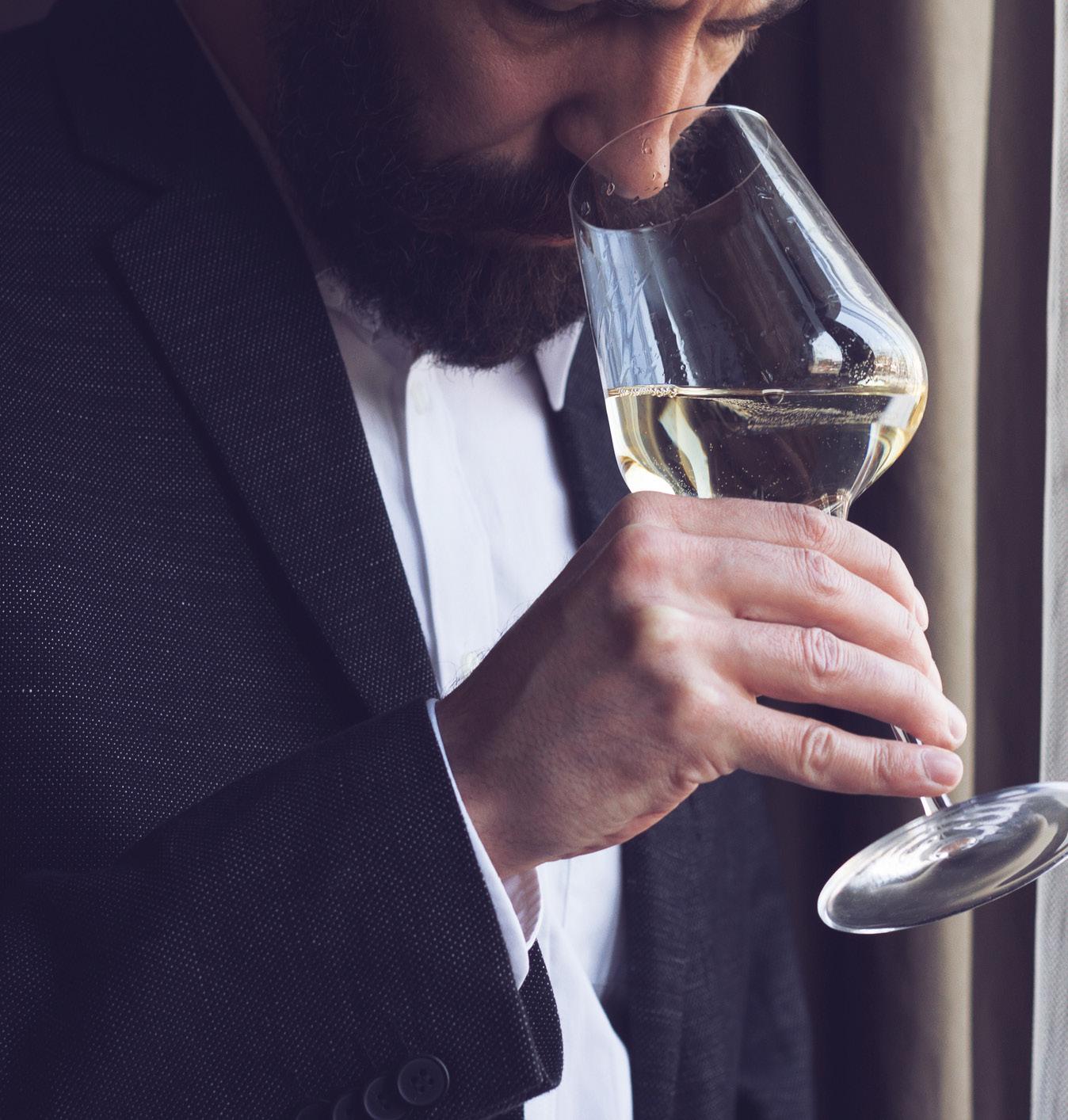
barrels, which could however be caused by a high level of residual sugar or by botrytised grapes). The sense of taste, with its 5 main flavours (sweetness, acidity, bitterness, salinity and umami) that interact with each other to sometimes intensify or diminish their intensity, plays a major role in the perception of a wine. Take acidity, for example, the backbone of wine. A more acidic wine, particularly one richer in malic acid (which lingers longer on the palate), will carry the perception of aromas and bitters for longer. This is bound to have an impact on the overall appreciation of the wine. Acidity also intensifies the perception of tactile elements such as the astringency of tannins and effervescence. The sensation of astringency, for its part, if strong, can interfere negatively with retronasal olfactory perceptions.
Even the sense of hearing is not to be neglected, since information divulged orally by others about a wine to be tasted influences our sensory analysis through the preliminary construction of an anticipation.
Finally, I couldn't finish without mentioning a new approach to tasting, which places the emphasis not on visual (blindfolded) and olfactory perceptions as usual, but rather on tactile sensations. This geosensory approach, developed by Jean-Michel Deiss (Alsace) and Jacky Rigaux (Burgundy), and recently extended by Julien Camus and his team, uses terminology linked to the geometry, texture, energy and consistency felt when the wine comes in contact with the mouth, as well as the quality, intensity and location of the resulting salivation.
ASI: Does psychology have an impact on our perception of 'taste'?
BM: Yes, our psychological condition, particularly our mood at the time, which is a reaction to our immediate environment, affects the quality of our critical judgement and therefore of our
sensory perceptions. It's a twoway street: as much as the tasting process generates emotions, the emotions we feel, whether pleasant (joy, euphoria) or not (sadness, melancholy), energydraining (anger) and sometimes suffering (depression), affect to varying degrees the mental image of the wine constructed by the brain in reaction to all the sensory information it receives. Who hasn't appreciated the quality of a wine drunk on holiday (in a relaxed state) and in good company? The same wine drunk back home sometimes disappoints. Enjoying a wine when you're full or when you're starving doesn't lead to the same result. Even the quality of our food affects our cognitive and concentration capacities, which are very much in demand when we taste wine. Tasting in a professional context therefore requires us to control our emotions as much as possible.
ASI: The role of a sommelier is basically to serve a wine, spirit or beverage that matches an individual's preferences. As such, many technology companies and major retailers are trying to develop algorithms and platforms based on artificial intelligence to create

“Sight takes precedence over smell and is the sense that guides the other stages of tasting by anticipation. The proof is that if you close your eyes, or use a black glass, brain activity is intensified to compensate for the lack of anticipation normally caused by the colour of the wine.”

personalised wine, spirits and beer recommendation platforms. Do you think this is a fool's errand, or is the concept of machine-generated personalised recommendations possible?
BM: Artificial intelligence is playing an increasingly important role in the wine industry, particularly in helping winegrowers to predict weather patterns very accurately, or more specifically to gather data on the health of vines. As far as recommendation algorithms are concerned, several platforms exist and are rapidly being perfected over time, thanks to vital feedback from consumers to increase the success rates linked to their individual preferences.
One technology, for example, can analyse several thousand wines, spirits and beers in a laboratory to first generate a generic palette of colours, smells/aromas, flavours and tactile sensations, which will then be compared with the sensory preferences of each consumer, revealed through answers to a questionnaire (which is obviously not optimal). A second algorithm has the task of establishing associations between the consumer's deciphered palate and the sensory matrix of a set of products to be recommended. The consumer's evaluation of the personalised recommendations increases the success rate. An alternative technology uses the expertise of Masters of Wine and Master Sommeliers to create the sensory matrix for each of the products that could potentially be recommended.
I think that even though recommendation platforms using artificial intelligence have made great strides since their very beginnings, and will continue to improve in the future, they will have difficulty predicting individual perceptions resulting from the multiple interactions between compounds that a measuring instrument cannot appreciate. And what about forecasts of how the wines will develop over the years?
What's more, as far as I know, no algorithm can measure, and therefore predict, the emotions felt by a taster, which would say a great deal about his or her level of appreciation of the recommended product.
ASI: Is it complicated to understand the impact of aromas on personal preferences?
BM: It would indeed be risky to rely solely on purely analytical information about the wines we drink, such as that presented in the technical data sheets available on the internet, to accurately predict their taste. Analysis results such as alcohol content (ethanol), residual sugar content (generally confused with reducing sugars, mainly glucose and fructose), titratable acidity (confused with total acidity), pH and dry extract are not reliable indicators of taste perception. The same is true of tannin concentration, which is very rarely disclosed to the taster, and whose value would not in any case be an accurate guide to its impact on the palate. We can extend this reflection to the parameters of maturation in oak casks, as well as to high-impact odour compounds such as those belonging to the
methoxypyrazine family (vegetal notes), monoterpenes (fruity and floral characters, sometimes resinous) and varietal thiols (citrus, exotic fruit, blackcurrant and boxwood notes), as well as TDN (hydrocarbon notes, commonly known as petroleum), rotundone (peppery notes) and sotolon (oxidative character).
Even disregarding the effects of the multiple interactions that exist between the elements of the wine and the genetic variability affecting perceptions, which must absolutely be taken into account, the results of laboratory analysis must be interpreted with caution. For example, although the intensity of the acidic taste is better correlated with the measurement of titratable acidity than with the pH of the wine, attention must be paid to the way in which this measure of acidity is reported. Depending on the region of the world, it may be expressed in tartaric acid equivalents or sulphuric acid equivalents, which makes a notable difference.
Taste interactions are numerous and affect tactile perceptions. For example, the perceived level of astringency is notably affected
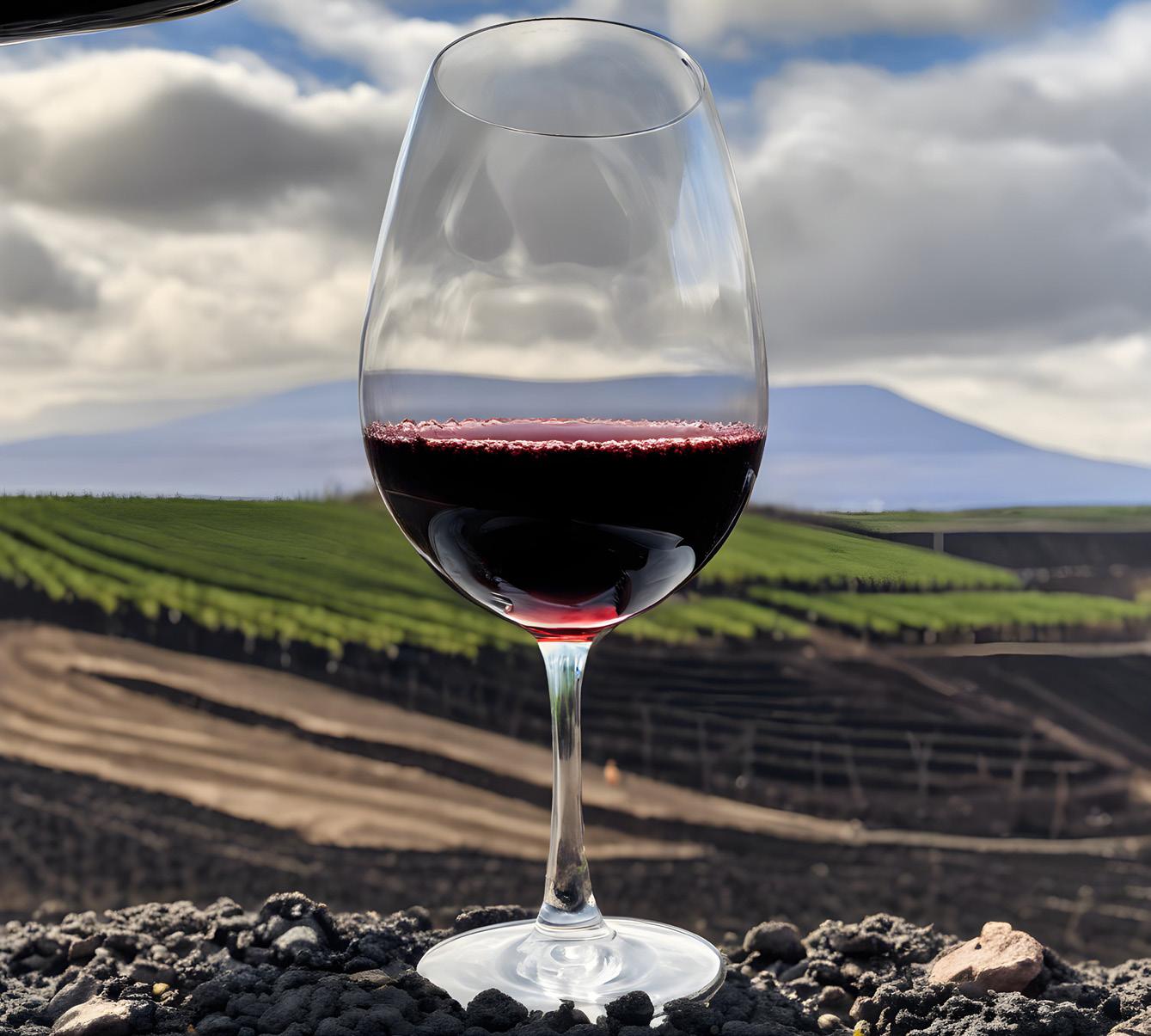
by the intensity of the acid taste, which in turn depends on the presence of other elements in the wine (sugars, glycerol, ethanol, bitter compounds, CO2), ageing on the lees, ageing in oak barrels and serving temperature. As for the bitter taste, its intensity is modulated by interactions with other flavours (sweet, acid, salty, umami). It's also important to remember that the bitterness and astringency associated with tannins depend on their chemical nature and size (which varies with the age of the wine), not just their concentration. Small tannins are more bitter than astringent, since they are small enough to interact with the receptors associated with this flavour, but not large enough to interact optimally with the salivary proteins responsible for astringency. Conversely, larger soluble tannins promote astringency. Olfactory perceptions, for their part, are the result of interactions between different odorous molecules, the flavours and textures of the wine.
In short, the taste of wine is constructed in our brains because of the stimulation of our five senses and the innumerable interactions that occur between the elements in wine.
BM: As I mentioned earlier, genetic variability affects individual perceptions, particularly at the level of olfaction, with its 400 chemically different receptors. This very large number means that between two people, more than 30 per cent of the receptors have variants, making
a proportion of the population more sensitive to certain smells, while other individuals are less sensitive and sometimes even unable to perceive them. This phenomenon of selective anosmia exists for several compounds, including rotundone (pepper odour), for which around 20 per cent of the population are insensitive, and β-ionone (violet and raspberry odours), which around 25 per cent of individuals cannot detect at the concentrations found in wines. The detection threshold for cork taint (2,4,6-trichloroanisole or TCA) can vary by a factor of 10,000 between individuals.
Genetic variability in taste is much lower, given that only one type of receptor exists for each of the flavours, with the exception of bitterness, which has 25. In the latter case, more than 150 variants exist, which explains why some people are more or less sensitive to the bitterness of certain compounds. The detection threshold can vary by a factor of 1 000 between individuals. There are even some people (around 20 per cent of the population) who are insensitive or almost insensitive to bitterness. At the other end of the spectrum, children are more sensitive because of the different composition of their saliva.
One aspect of your question concerns the role of saliva in taste perception. It's important to remember that saliva varies between individuals, in terms of its pH and protein composition, as well as salivary flow (quantity) and the speed with which it regenerates once the mouth is dry. All of this, of
course, has an impact on individual perceptions. For example, the oral pH can be between 6 and 7 (and sometimes even above 7), a factor of at least 10 in terms of acidity. This may explain the differences in sensitivity to acidity in wine: a person with a higher oral pH should perceive this acidity more intensely by contrast. The same applies to the taste of mice, whose aroma (only detected retronasally) is better perceived by people with a higher oral pH.
Salivary flow differs greatly from one person to another, which affects the perception of tannin astringency: people with a higher flow will find tannins less drying. However, for the same person, salivary flow varies according to hydration level, medication, and even emotional state and time of day.
Finally, saliva contains enzymes capable of releasing a number of aroma compounds from their odourless precursor, which remains intact following fermentation and ageing of the wine. On the other hand, another category of enzymes can break down certain esters (fruity aromas) into their basic constituents (an acid and an alcohol). People who are less well endowed with these enzymes could therefore be affected in their perception of certain aromas.
ASI: Can we eliminate personal prejudice and history from the equation?
BM: You're right, the individual memory built up since birth, sometimes even unconsciously, plays a key role in the recognition of odours. However, it's not enough for an individual to have been in
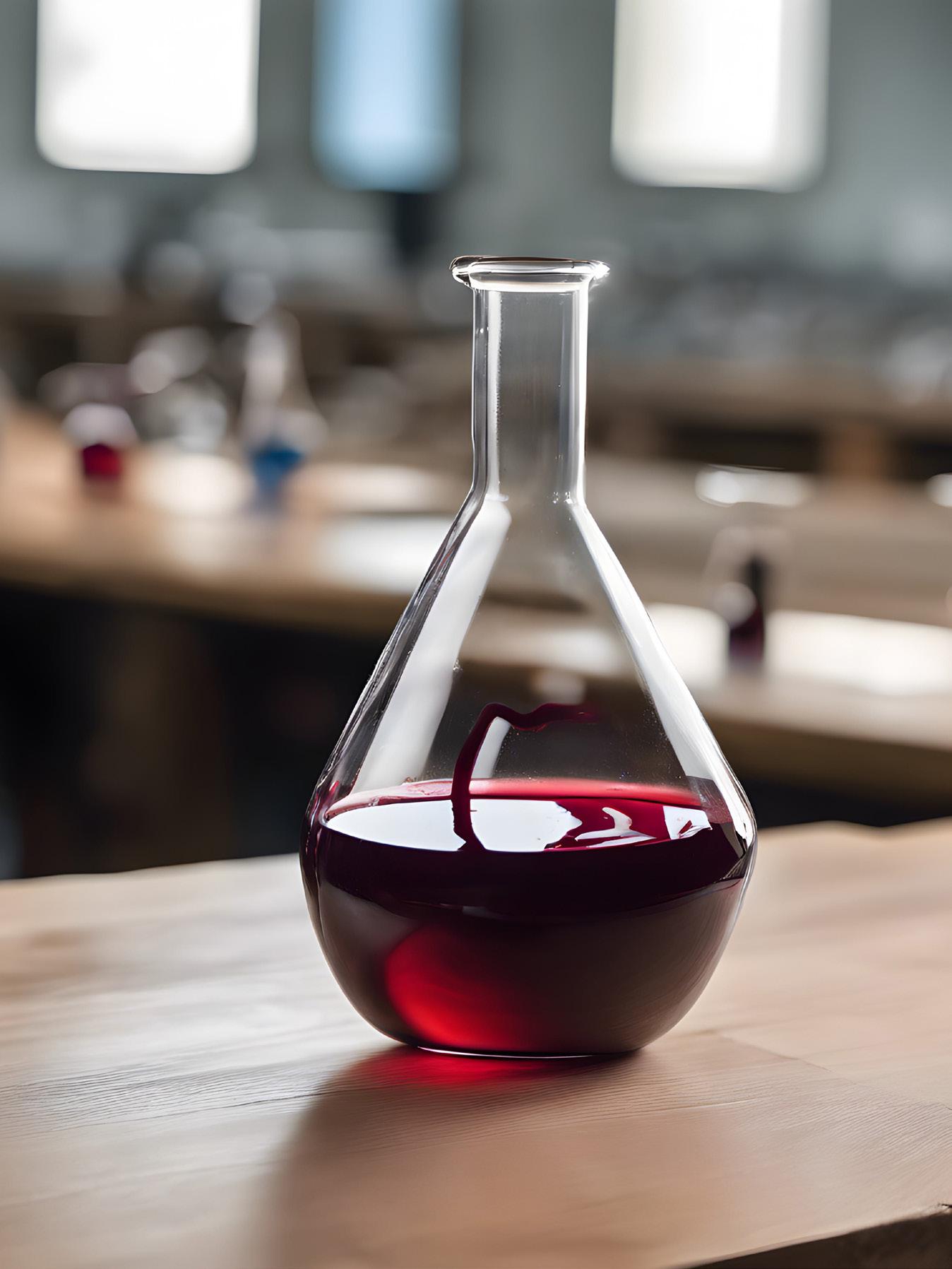
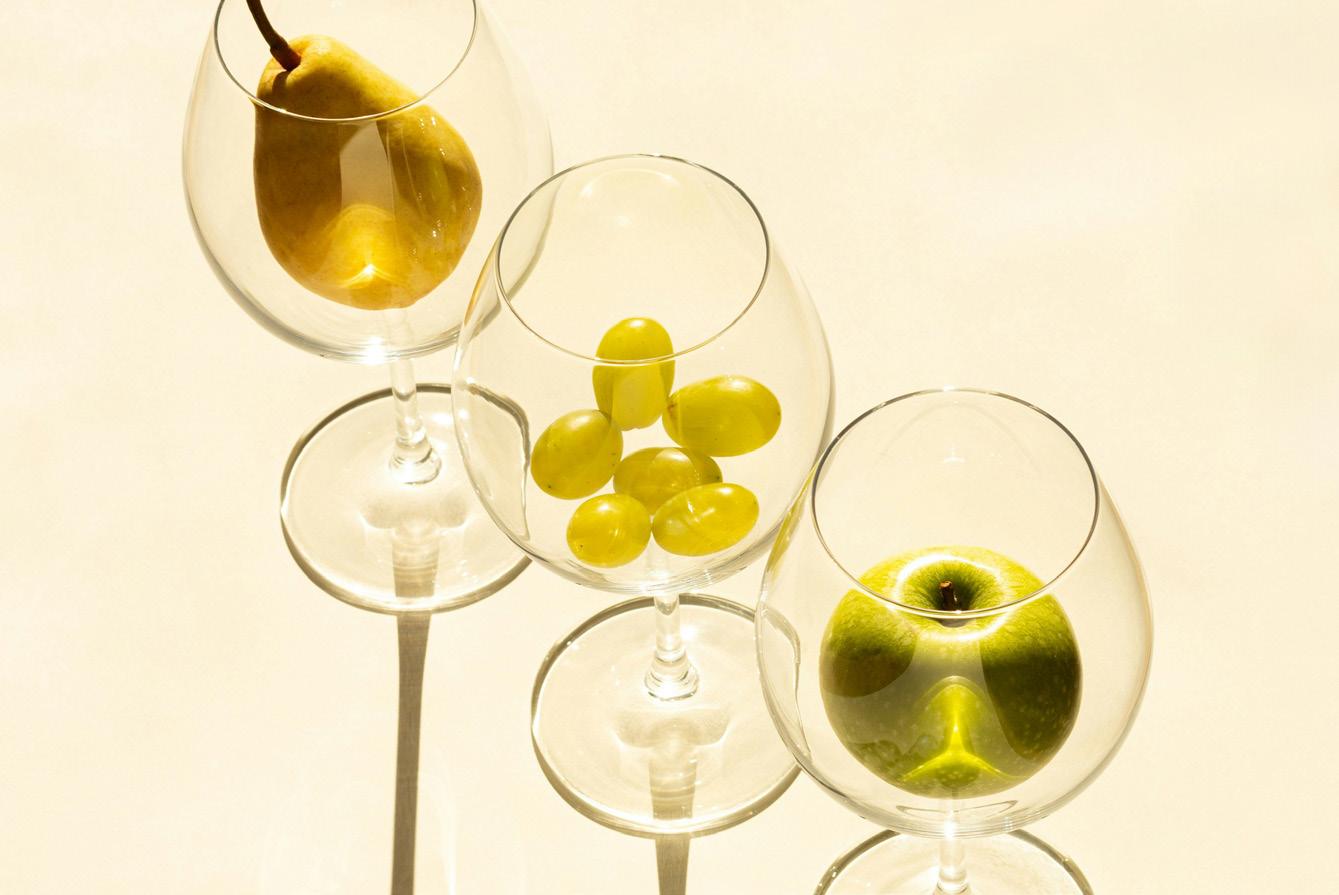
contact with a smell once for them to be able to recognise it easily - particularly in a very complex environment like wine - unless a strong emotional relationship has been established. In most cases, on the contrary, the individual must have interacted with the smell several times in their past. Of course, a person who has never smelled an odour will never be able to recognise it; however, in some cases they will be able to associate it with a nearby odour with which they are more familiar.
From this point of view, cultural variations are interesting to analyse. For example, the smell of ripe strawberries, easily recognised in Western countries, will be interpreted by the Chinese population, who are not travellers, as being pineapple. In fact, several identical volatile compounds make up the smell of these two fruits.
“We have to be able to concentrate on the present moment, trying to disconnect our thoughts from our sensory and emotional references.”
ASI: Can we strip personal bias, history out of the equation?
BM: Your way of thinking is perfectly normal. As I said at the beginning of this interview, our brain looks for shortcuts and anticipates. It
spontaneously constructs an overall image of the wine based on visual or auditory information received (consciously or unconsciously) before starting the tasting exercise, and on our past learning. Our tasting experience therefore works against us in the quest for sensory objectivity. For example, a beginner who has never learnt the characteristics normally attributed to a Chablis winethere’s room for discussion there too - wouldn’t have the same bias as you do. The same would be true of a well made Chinon from a fresh vintage for which the informed taster anticipates vegetal notes of green pepper.
It takes constant effort to ask our brains to disregard the knowledge we have already acquired, and which is firmly anchored in our memory. We have to be able to concentrate on the present moment, trying to disconnect our thoughts from our sensory and emotional references linked to the type of wine we are tasting, as a beginner would do. This takes practice. In the end, I don’t think it’s possible to completely avoid our personal biases, but we can mitigate their effects.
ASI: As sommeliers do you think we are guilty of placing too much emphasis on ‘terroir’, varietal, place?
BM: That’s not a simple question to answer, as it involves so many
factors, including the emotional aspect. A complete answer would require more than a chapter of a book! In my opinion, the winemaker, through his cultivation practices, his actions during the growing season, including the harvest, and his decisions in the cellar, deserves greater recognition as a contributor to the taste of the wine. After all, isn’t the human element just as much a part of the concept of terroir as the climate, the soil or the topology of the vineyard?
For example, we know that harvest dates have a major impact on the levels of technological maturity (sugars, acids), phenolic maturity (mainly pigments and tannins) and aromatic maturity (compounds and aroma precursors) of the grapes. This obviously influences the taste of the wines that will be produced. In the cellar, the decisions taken by the winemaker or oenologist also contribute to the sensory perception of the wines.
To illustrate this point, let’s take the case of wines made from vines grown in volcanic soils. In our imagination, we might be tempted to link the smoky notes of these wines (often perceived) directly to soil derived from rapidly cooled lava. However, a less direct explanation lies in the characteristics of this type of soil, particularly its relatively low organic matter content, which limits its assimilable nitrogen content (nitrate and ammonium ions). Without the intervention of the winemaker, by adding assimilable nitrogen to the must, the yeasts modify their metabolism to produce more hydrogen sulphide during fermentation, which favours the formation of sulphur compounds with mostly undesirable reduction odours. However, some of these compounds have odours similar to smoke (flint) or seaside shells such as oysters, which many people associate with mineral perceptions. Soils other than those of volcanic origin may be deficient in assimilable nitrogen, depending
“After all, isn’t the human element just as much a part of the concept of terroir as the climate, the soil or the topology of the vineyard?”

on the cultivation practices applied to the vineyard. The winegrower’s choice of whether or not to adjust the level of nitrogen can therefore contribute to the taste of the wine. A wine with a flinty perception is sometimes so desirable that the winegrower can deliberately limit the assimilable nitrogen content of the soil. It’s no longer a question of terroir or even grape variety!
The selection of the yeast strain also plays an important role in the taste of the wine, and the winemaker has control over this, except when using the grapes’ natural yeasts (spontaneous fermentation). In fact, up to several hundred strains of yeast exist on the skin of grapes, from several different species with their own particularities. Yeasts differ not only in their specific resistance to environmental conditions (temperature, pH, sugar, alcohol, assimilable nitrogen and sulphur dioxide content), but also in their ability to produce glycerol, a variety of aroma compounds, higher alcohols with vegetal notes, succinic acid with umami character, volatile acidity and sulphur dioxide. We should therefore not underestimate the contribution made by the winemaker to the sensory characteristics of the wine through his choice of yeast, which can have a positive effect on the varietal character of certain grape varieties. However, this is much less clear when it comes to producing organic, biodynamic or natural wines. Although the yeasts best adapted to producing alcohol (Saccaromyces cerevisiae) are very rarely found naturally on the surface of the berries, they are the ones that generally complete the spontaneous fermentation process, the others rarely surviving beyond 4
to 5 per cent alcohol and being less tolerant of sulphur dioxide. There’s another point I’d like to make here that’s generally not discussed enough: new oak casks contain several strains of Saccaromyces cerevisiae yeast, sometimes as many as 40. This certainly has an impact on the sensory quality of the wine produced.
Fermentation temperature also has an impact on the overall perception of the wine. First and foremost, it influences the actual involvement of the different yeast strains in the process, with a higher temperature favouring the contribution of Saccaromyces cerevisiae yeasts to the detriment of indigenous yeasts. Fermentation temperature also has an impact on the concentration of certain aroma compounds. If the temperature is too high, aromas are lost, while if it is too low, more banana aromas are produced. The fermentation temperature also controls the extraction of phenolic compounds, which will have an impact on the colour of the wine, and on the nature and concentration of the tannins.
ASI: Big question. Can science replace sommellerie?
BM: Over the years, numerous scientific advances have led to a better understanding of, among other things, the physiology of the vine, the metabolism of yeasts and bacteria (including wine defects), the parameters affecting the synthesis and evolution of numerous wine compounds, the effect of ageing in oak barrels, the evolving characteristics of different types of cork (natural cork, agglomerated cork, synthetic cork, screw cap, etc.), the physiology of smell and taste, and much more. Technical advances in analytical chemistry (more sophisticated and sensitive instruments) have also made it possible to identify the molecules that contribute to an impressive number of odours. Despite these remarkable advances, science does not explain everything, but progress continues.

As I mentioned earlier in this interview, if we go back to recommendation platforms using artificial intelligence and often based on laboratory analysis of thousands of wines, I don’t think they will be able to fully satisfy the consumer’s quest for a complete overall sensory experience. Increasingly discerning and curious consumers are looking for wines produced responsibly and sustainably by convinced (and convincing) winemakers with an inspiring family history. Sommellerie will always have its place in educating and advising consumers. Sommeliers’ experience also enables them to talk about a specific wine’s past vintages, its likely evolution over the years in the cellar, and any changes in a producer’s growing practices and winemaking philosophy. And, of course, knowing the consumer’s preferences gives him the information he needs to advise (and explain) judicious pairings. Having said that, sommeliers must never stop updating their knowledge.
“Technical advances in analytical chemistry have also made it possible to identify the molecules that contribute to an impressive number of odours.”


Dr. Nic Spencer, born in the United Kingdom, is a distinguished chemical engineer, but also a Wine & Spirit Education Trust (WSET) Diploma holder. His academic journey began at the prestigious University of Cambridge, where he completed his undergraduate and graduate studies. Seeking further academic challenges and opportunities, Dr. Spencer moved to the United States to undertake postdoctoral research at the University of California, Berkeley. Its here Dr. Spencer became familiar with wine, taking day trips from Berkeley to wineries in Napa in his Volkswagen Beetle.
After his postdoctoral stint, Dr. Spencer spent a little more than a decade contributing to the US chemical industry, working out of Washington D.C. where he honed his expertise and developed a keen interest in surface science and technology. His professional trajectory took a significant turn when he joined ETH Zürich, one
of the world's leading universities, as a Professor of Surface Science and Technology. For the past thirty years, he has been an integral part of ETH Zürich's faculty, making groundbreaking contributions to various fields including tribology; the science of interacting surfaces in relative motion. You might ask how does tribology connect with wine? All sorts of sensory perceptions rely on the relationship of saliva to various structural elements of a wine such as acidity, and tannin amongst other elements.
As for Dr. Spencer’s interest in wine, it has been a post-retirement occupation. He says, “I never thought at the time what I was teaching would have a relevance to wine. But, in the end, and that's how I'm spending some of my time now. I can thank Covid for this.”
On one of Spencer’s semi-frequent travels to Argentina, he is also a tango enthusiast, he decided they should visit Mendoza, Salta, and Calchaqui. After an evening enjoying
a luxurious meal at El Enigmo, they returned to their hotel at Tapiz winery, where they were informed, they must go into quarantine. They ended up being stuck in the winery for two months, living on the property during harvest. Not only did it allow them to witness the harvest, but Spencer even got involved in making sparkling wine. Upon their eventual return to Switzerland, Spencer enrolled in the WSET programme. In only 2 years, he had attained his WSET Diploma.
Xeniya Volosnikova for ASI (XV): Has your scientific background given you an advantage when it comes to sensory analysis?
Nicholas Spencer (NS): I do think it helps because I'm not scared by any of the technology or the biochemistry or the chemistry. I understand the chemical nature of the process components and how they might interact. I’ve also found (my background) also useful when writing dissertations. It's very useful to be used to the structure of a scientific paper, especially from the point of view of being able to extract useful information. Even things that are not specifically chemistry, like biochemistry or microbiology, I know enough that I can at least figure out the main points. If I don't understand something, I know enough people in various fields to ask.
XV: One of the fascinating aspects of wine is constant learning and understanding. Do you agree?
NS: Yes. Something that occurred to me recently while I was in the Jura tasting various wine that have been put under flor. As soon as I tasted that, I could smell acetaldehyde, which is the same thing you taste in Fino Sherry. It took me back to when I was a ten-year-old chemist at home. I synthesised organic molecules in my parents’ kitchen and acetaldehyde was one of them. So, this means I smelled acetaldehyde for the first time at a very young age.
XV: When tasting, do you find yourself seeking to identify specific compounds or starting with broader aromas, flavours as a sommelier might do?
NS: I can’t say that I taste in any particularly unusual or unique way. I run through the various categories of aroma and flavour in my mind. Does it smell of, or taste of this? Then I run through the possibilities. I taste in a classic deductive way, unless there's something, that I recognise as a simple chemical. That said, most of the aromas and flavours of wine are very complex. You may think a wine smells like strawberry, but it doesn’t exactly. The aroma of ‘strawberry’ has some chemical similarities to things that are also present in strawberries, but there are probably half a dozen molecules that make strawberries smell of strawberries. For the most part, it's only really what it's going on in your brain, what memories the aromas of the wine are evoking, and so on. Although there are some simple molecules such as acetaldehyde, TCA, or TDN (petrol in Riesling, for example) I'm very sensitive to. Although, I must say I am not sensitive to Brett (brettanomyces). My nose never detects it.
XV: Do you think you need to have experience to recognise aromas?
NS: I think we all know the experience of smelling something and saying, “what is that”? There is a connection between smell and memory. Not to mention, your sense of smell needs to be kept limber, exercised.
XV: How do you go about recognising structural elements like tannin?
NS: This is an aspect of wine that I'm spending a lot of time on now. If you think back to the way we're meant to describe tannins in the WSET Diploma programme, for example, there's a very large number of descriptors that we can use. Basically, the effect of tannins is astringency, and astringency itself has various subqualities such as drying, rough, and puckering. All these sensations are different. The question becomes why is tannin causing all these sensations? It’s fascinating what tannin is doing to the layer of saliva on the tongue. All of this is basically changes in the friction of the tongue against the palate, and the saliva is lubricating that interaction. The structure of the saliva on the tongue is really fascinating because saliva has these chains called mucins. There are many kinds of mucins, and they assemble themselves in a certain way on the tongue, and they're responsible for the lubrication. When the tannin comes into play, it binds up these things in different ways. So, in that way tannin is not always tannin. It can come in many different sizes and shapes, and it's constantly changing as the wine ages. I am now working with a saliva expert in London. We are trying to create a surface that. That mimics the tongue that has the same kind of saliva structure, because they (mucins) don't just stick. They stick in a particular order onto the tongue surface. There's a mucin that comes out of the cells on the
“As soon as I tasted that, I could smell acetaldehyde, which is the same thing you taste in Fino Sherry. It took me back to when I was a ten-yearold chemist at home.”
top of the tongue, and then the rest of the mucins assemble onto that. Then the tannins come in, and they interact with that in different ways. Then the acidity in the wine also gets involved in that interaction. Then there are things like the polysaccharides, the maltodextrins, and various other things that come from the yeast or from the grapes. They also interact, and they can even help the lubrication. Some of the polysaccharides form a lubricating layer on the tongue. Then one must consider how the alcohol interferes with the interaction between the tannins and the mucus.
XV: How do you account for individuality of palates?
NS: This is one of the frustrating things about doing research with saliva. I've now done quite a lot of measurements measuring friction using my own saliva. If I use someone else's saliva, I get a different result. Then you must consider things like meals. Saliva is variable. I think one of the reasons people have different sensations is because saliva is all different. When we finally write a paper on the stuff we're doing now, it's going to say that the saliva was collected from a healthy 69-year-old volunteer.
XV: How does saliva interact with acidity?
NS: Acidity is not just acidity. There are quite a few organic acids that can end up in wine, either from the grape or via malolactic fermentation, for example. You can change the spectrum of acids that are in there and they all become acids at different pH values, which means that when they are exposed to an environment that's at a different pH, then they're going to have more or less detectable acidity. So it's like the difference between total acidity and pH. That's why they're two different concepts.
I think that this acid composition, in terms of which acids are present,

can have an enormous effect on not just the mouthfeel, but also on things like the length of a wine, because once you have taken your sip of wine then you begin to salivate. As you salivate the pH in your mouth is changing from the wine pH to the normal pH of your mouth. During that time any residual acids in there are going through their transition. I think that’s a very interesting area of research that hasn't been looked at a lot. Given that acidity interacts with the tannin and saliva, I think it could have a very big effect on mouthfeel.
XV: How about the case of acid addition and its impact on integration?
NS: When people say things like it's better integrated, there's an awful lot of chemistry behind that statement. Right. If it really is better integrated, that probably means that it's reacted with something, or the yeast has somehow metabolised it into something else. It would be interesting to know what has happened. With respect to a tartaric acid addition, for example, it could be that it's just being masked by something else like that. There's this classic experiment that they recommend you do in WSET Level One. Students first taste a solution of tartaric acid that is horribly acidic. Then they taste
quite a strong sugar solution, which is horribly sweet. Then they mix the two and it tastes quite pleasant. It’s a beautifully illustrative experiment, but I think it's probably something similar going on, not with sugar, but something else that may be masking or reacting with the tartaric acid that may be created during the fermentation process.
XV: How can your research aid the wine community?
NS: One way, for example, is with low alcohol and non-alcoholic wines, because their mouthfeel is absent. As such producers often must put in sugar or carbonate the wines to just give some sense of mouthfeel. I'm now collaborating with Geisenheim to improve the texture of non-alcoholic wines.
XV: You’re challenging sommeliers to think about aroma, tannic, acid perception and mouthfeel through a different lens. How does one become a better taster, to understand these interactions better?
NS: I think it's like the woman who asked the man on the streets of New York, how do I get to Carnegie Hall? And he says, “practice, lady, practice.” It's the same with wine tasting.
“You may think a wine smells like strawberry, but it doesn’t exactly. The aroma of ‘strawberry’ has some chemical similarities to things that are also present in strawberries, but there are probably half a dozen molecules that make strawberries smell of strawberries.”
When you take a sip of wine, you're greeted by various sensations. You notice the aromas and flavors, which come from different stages of the winemaking process. At the same time, you feel physical sensations that aren't about taste, such as the wine's temperature and texture. One key aspect of texture is how the wine interacts with the saliva in your mouth, affecting lubrication and mouthfeel.
Mouthfeel refers to how wine feels in your mouth, including sensations like dryness or smoothness. This sensation largely depends on how the wine interacts with saliva. Saliva is a watery solution from our salivary glands that contains proteins, such as mucins and glycoproteins, which lubricate and protect the mouth. These proteins form a slippery coating called a pellicle on your oral surfaces. Another key part of the mouthfeel of wine, in particular red wines, is astringency, which is a drying or puckering sensation. This sensation occurs primarily because compounds in the wine, notably tannins, disrupt the lubricating salivary pellicle, increasing friction in the mouth. Tannins are polyphenols found in grape skins, seeds, stems, and oak, and they can bind with salivary proteins, making the mouth feel dry and rough.

• Tannins: The tannin level in wine strongly affects the drying sensation. High tannin content increases friction by disrupting the salivary pellicle.
• Acidity: Low pH levels (high acidity) can also cause astringency by denaturing salivary proteins, which makes them less effective at lubricating the mouth.
• Ethanol (Alcohol): Alcohol can reduce the impact of tannins on astringency, as it interferes with tannin-protein interactions.
• Polysaccharides: These are sugars from grape cell walls and yeast. They can help reduce astringency by interacting with tannins and preventing them from binding to salivary proteins, thus preserving lubrication.
Researchers, including Nic Spencer, have studied these interactions using both taste panels and scientific tools. One method is tribology, the science of friction, which helps measure how well saliva and wine components lubricate the mouth. In these studies, wines with different levels of tannins, acidity, and other components were tested to see how they affected mouthfeel. As part of the Spencer’s research astringency was grouped into three subsets including: a dry sensation, a puckering sensation, and roughness.
• Drying Sensation: Caused by tannins that bind with salivary proteins, stripping away the lubricating layer and increasing friction.
• Pucker Sensation: Related to wine's acidity. High acidity can denature salivary proteins, reducing lubrication and increasing friction.
• Roughness: Often accompanies drying or pucker sensations and is not an independent quality.
Understanding these interactions is crucial for winemakers. By adjusting tannin levels, acidity, and other components, and the relative amount of each, they can better control the wine's mouthfeel. This knowledge will also valuable for creating nonalcoholic wine alternatives that aim to replicate the mouthfeel of traditional wines.
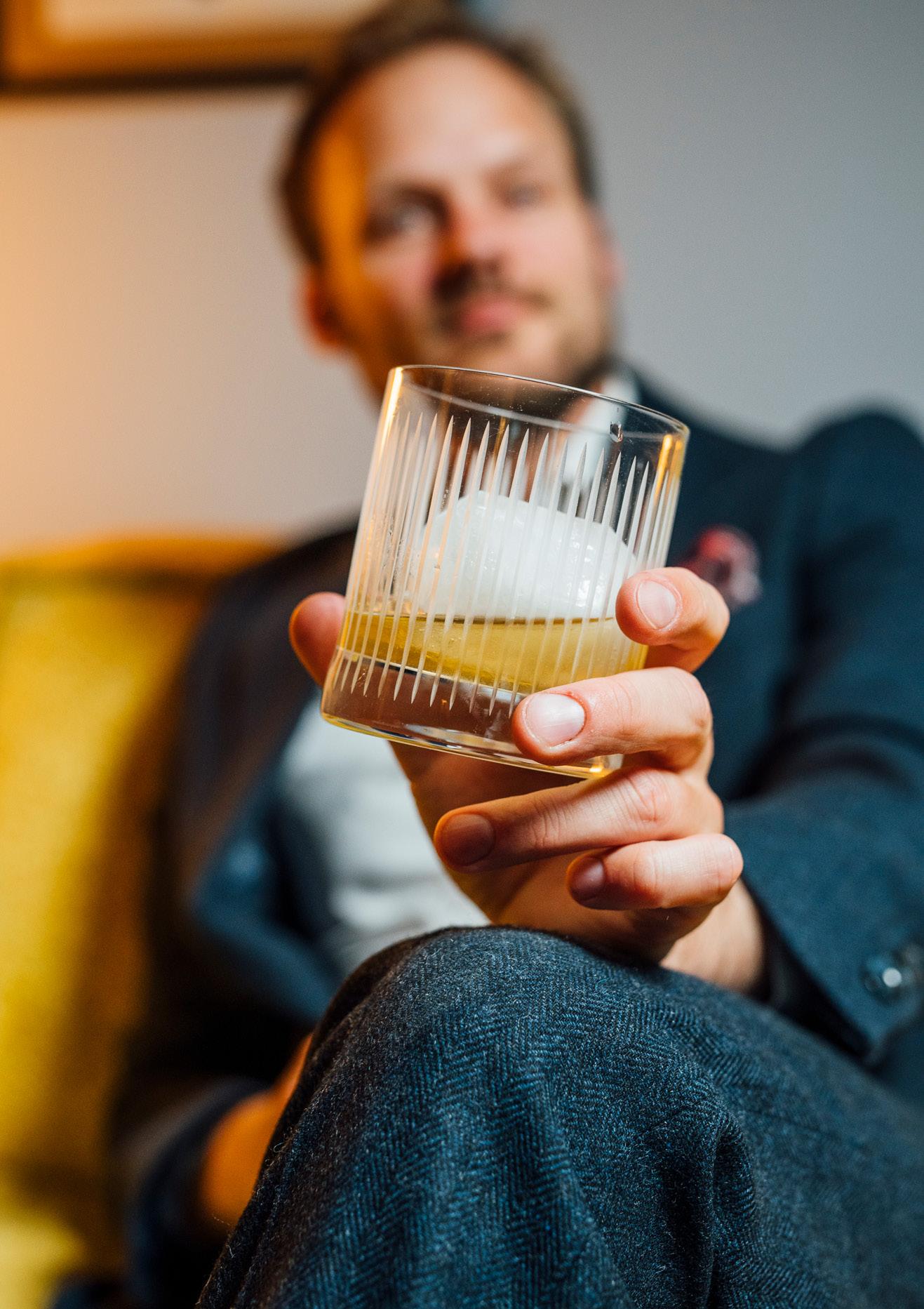
The worlds of winemaking and distillation represent two of humanity's most storied traditions in crafting beverages. Both fields aim to produce high-quality beverages that reflect their origins, but their methods and philosophies can be significantly divergent. Winemakers and distillers often approach their crafts with different priorities: preserving a sense of "terroir" versus mastering process consistency. Understanding these differences reveals much about how each industry views flavour, tradition, and innovation.
Dr. Don Livermore is the Master Blender at Hiram Walker and Sons. Known as a legend in the Canadian whisky world, Dr. Livermore's entry into the world of whisky was somewhat serendipitous. Armed with a degree in microbiology, he began his career at Hiram Walker and Sons over 25 years ago. Since then, he has earned his master’s and PhD in brewing and distilling from Edinburgh's HeriotWatt University. Today, he oversees the creation of award-winning whiskies, including JP Wiser's, Lot No. 40, and Pike Creek. Dr. Livermore shared his journey and the intricacies of whisky distillation and blending, providing valuable insights into the craft.
At its heart, winemaking is a celebration of place. The concept of terroir—French for "taste of place"—is central to this tradition. Winemakers strive to create wines that reflect the unique characteristics of the soil, climate, and geography where the grapes are grown. This focus on terroir means that every vineyard and vintage has its own distinctive profile, influenced by a complex interplay of natural factors. As such, for winemakers, the primary goal is often to let the grapes speak for themselves. Techniques are employed to preserve the inherent qualities of the fruit rather than imposing a particular style. Minimal intervention is an increasingly common and wellembraced philosophy, allowing the natural characteristics of the grapes and their environment to shine through. This approach can lead to significant variations between different vintages and regions, emphasising the role of nature in shaping the final product.
While many distillers seek to embrace terroir, and in fact, Livermore suggests terroir expression in whisky is a function of the cellar environment as much as the origin of base ingredients, he also suggests the primary focus of those producing highquality whiskies is on process and consistency. Distillers are often more concerned with creating a product that maintains high quality across batches and over time. This involves meticulous control over every aspect of production, from grain selection to fermentation, distillation, ageing, and blending. Of his position, Livermore says, “First and foremost, my job is to put the mechanisms and processes in place to be confident in what we are making. The second aspect of the job I look at as a master blender is making sure our inventories (casks of whisky) are in a better position than when we started. Next, it is designing new recipes, new products, and making sure they are consistent. It’s about working every day to ensure the inventory is in good shape, and at the same time
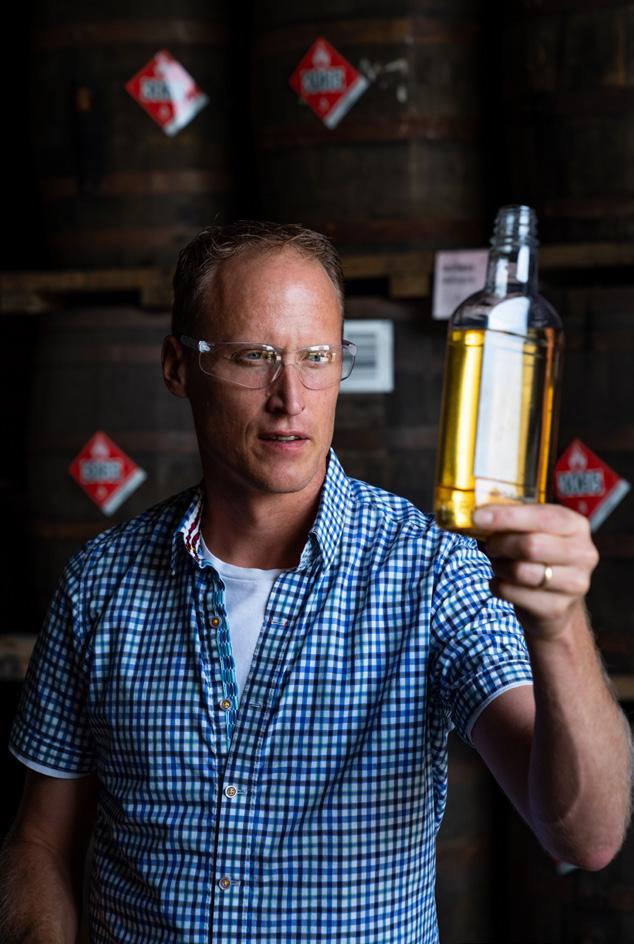
"Fermentation is the heartbeat of what we do. Yeast probably contributes the majority of the flavours in whisky."
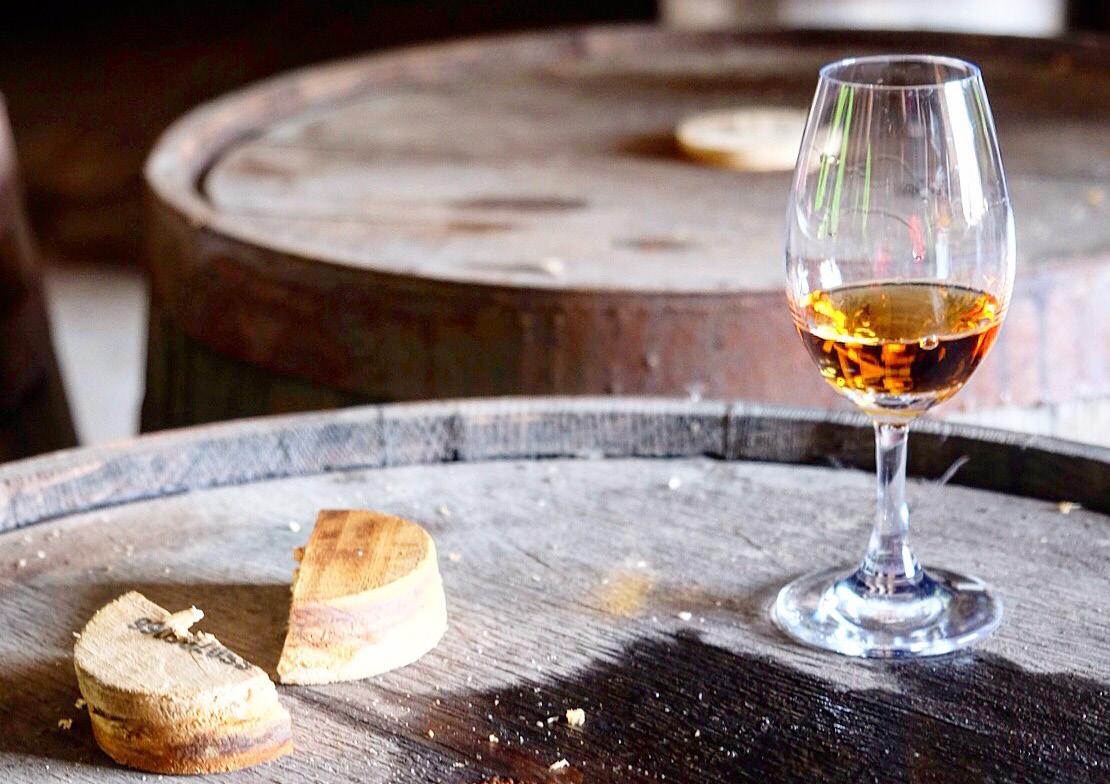
thinking about a long-term vision of how you are steering the ship.” Livermore even must apply that thought process for a time when there will be a new captain, a new master blender, in control.
So what’s shaping the flavour of the final product? Livermore says, “I'm considering the grain, the cask, and the ageing. I can adapt aspects of these three things. I can change the grains between corn, wheat, rye, unmalted barley or malted barley, and I can burn or toast casks a certain way. Finally, I can also age and finish different ways to get a different flavour profile." While these aspects are all important, he says, "Fermentation is the heartbeat of what we do. Yeast probably
contributes the majority of the flavours in whisky." Despite its importance, Livermore acknowledges the role of yeast and fermentation is often overlooked by consumers, admitting that winemakers have done a better job in telling the story of the impact of yeast, particularly natural yeasts, in flavour development.
A critical factor that contributes to the terroir of whisky is where the whisky is aged. Dr. Livermore's PhD research focused on how temperature and relative humidity in warehouses affect the ageing process. "Where our barrel ages, in terms of temperature and relative humidity, will definitely affect the flavours," he explained.
"This is the terroir part of whisky." Fluctuations in temperature cause the whisky to expand and contract within the barrel, increasing its interaction with the wood. In warmer climates or during summer, higher temperatures accelerate this process, often leading to a more intense and quicker maturation. In some regions, the temperature remains relatively constant throughout the year, leading to a slower and more gradual maturation process. This can result in a smoother and more balanced whisky. Humidity is also a factor, as in humid environments, more alcohol than water tends to evaporate from the barrels (the "angel's share"). This can lead to a decrease in the whisky's alcoholic strength over time and potentially a richer, rounder flavour, while in drier conditions, more water than alcohol evaporates, which can increase the whisky's alcoholic strength. This might concentrate flavours but can also lead to a harsher taste if not managed properly.
Of course, the base ingredients matter, but according to Livermore, they do not fluctuate in character as much as grapes might. He says, “I think with the advance of agricultural sciences, genetics, and phenotypes, grain has become very consistent.” Livermore has worked with their farmers to ensure the consistency of their grains. Livermore elaborates,
“Since 2015 we have actually asked our rye suppliers to grow specific varieties of rye. Since this time, we have seen a far more consistent flavour profile in our rye.” Rye is critical to the character of Canadian whisky, according to Livermore. “It is definitely the spice to Canadian whisky… it gives you that warm feeling in the chest. The longer that feeling sticks in the chest indicates to me how much rye is in the recipe. We sometimes call it the Canadian hug.” The latter is borrowed a bit from American whisky producers, who also refer to the spiciness of rye as a Kentucky hug.
Barrels also play a significant role. The final character of a whisky, according to Livermore, will be dependent “on the quality of the barrels that you use. The first time you use a brand new barrel, for example, you're going to get four to five times the amount of vanilla, caramel, and toffee notes in your whisky… a lot of that sweetness in your whisky. Or, for another example, if finishing a whisky in a barrel that’s previously held wine, you will bring in more fruity notes.”
As for how a sommelier can explain the flavours of whisky to the guest at the table, Livermore acknowledges that talking about esters developed from fermentation is a little more difficult in the limited time a sommelier might have at a table. Instead, he says, “I would focus on

grain profile (notably the amount of rye in Canadian whiskies), and I would focus on flavour contributions from the barrel. The strength of the spirit is another key talking point. The higher the strength, the more grain and woody flavours are going to come out. The lower the strength of the whisky, the more fruity and floral notes will come out. So if you're trying to pair a food, something with a higher strength, that might be. You might want to dial up the woody or spicier notes.”
Ultimately, it’s about what the customer wants. Livermore uses this philosophy of listening to the customer to help him develop his recipes. He says, “I think that I have to listen to what they're looking for, what their interests are, what are they talking about, what excites them, because then it excites me…at first, I was a little shy going out into the market, talking to people, but I think it's become one of the most critical parts of my job as a blender.”
Meeting what he calls uisgefiles (a reference to uisge beatha, the traditional Gaelic name for whisky, and combining it with oenophile as used to describe wine aficionados), Livermore gets excited about the volume of knowledge they exude. It leads him to believe that soon enough, the impact of fermentation and yeast will become part of the way we describe the character of whiskies, but perhaps not just yet. He hopes those uisgefiles will also talk more about Canadian whisky. As he says, “I think Canadian whisky has been going through a renaissance for a little while now. It’s becoming trendy now in other whisky categories, such as Bourbon, to talk about blending. I think Canada had it right in the first place (Canadian whiskies are typically blends of rye, corn, barley, each fermented, distilled and aged separately before being blended). I think we're the original blenders. I can show recipe books dating back to the 1880s that we stumbled on being a blended whisky category, which continued that for a long time.”
As Dr. Don Livermore suggested, the aromas and flavours of whisky are a result of a myriad of decisions ranging from grain, malt selection, the yeast used for fermentation, distillation choices and barrel selections.
Esters, which are typically by-products of fermentation, can create fruity aromas such as apple (ethyl hexanoate) or even pear drop, banana notes (isomyl acetate). These esters may be diluted via chill filtering.
Phenols, often originate from the grains and from charred barrels, can contribute a wide range of aromas from spice (rye) to smoky notes in the case of whiskies produced with peat fired barley. Some of these include guaiacol (smoky, earthy, medicinal), eugenol (spice, cloves) and cresol (coal, tar, medicinal).
Aldehydes are formed through the partial oxidation of primary alcohols such as ethanol. Further oxidation of aldehydes produces carboxylic acids. Furfural, a key aldehyde in whisky, contributes almond, biscuit-like aromas and typically found in malt whiskies. Phenolic aldehydes like vanillin and cinnamaldehyde, are the result of alcoholic hydrolysis of heat-degraded oak lignin during cask maturation, imparting the cinnamon and vanilla-like aromas.
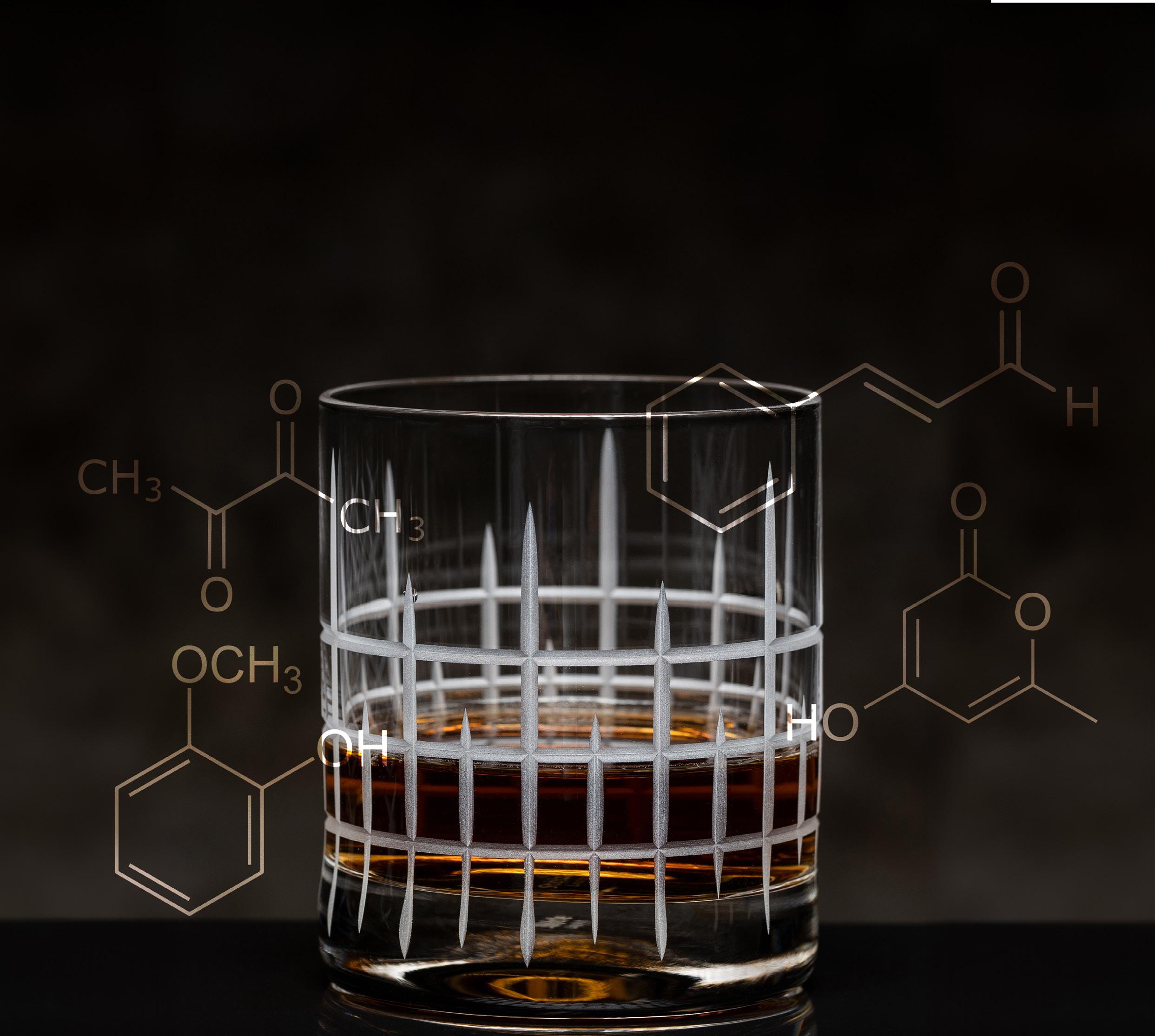
Lactones are found in oak barrels, and are imparted to a whisky during the maturation, finishing process. This is influenced by the environmental conditions. Lactones may produce spice, and coconut-like aromas.
Whiskies are complex combinations of various organic compounds, some which such as diacetyl contributes a buttery, corn-like character, while certain sulfur compounds can produce less desirable rubber, meats and burnt match aromas.

October 5-6, 2024
On the first weekend of October, all roads lead to Moldova for the premier wine event in Eastern Europe – the National Wine Day of Moldova. This celebration is a testament to Moldova’s rich wine culture, where 100 winemakers, from well-established industry leaders to boutique producers and emerging wineries, come together in the heart of Chisinau.
This event, a cherished tradition for 12 years, showcases the deep love and dedication Moldovans have for their national product. It has grown into one of the world’s largest wine celebrations and has twice been honored by the prestigious Wine Travel Awards in the Wine Tourism Events category, recognized as the „Magnet of the Region.” This accolade underscores the event’s significant impact across Central and Eastern Europe, highlighting the exceptional quality and culture of Moldovan
The event’s two-day program includes wine tastings, masterclasses, concerts, art exhibitions, and demonstrations of traditional winemaking processes, offering a complete sensory experience. Every visitor will have the opportunity to explore a vast array of wines, from young vintages to limited editions, and even those being launched for the first time at the festival.
The festival extends beyond Chisinau, reaching wineries, restaurants, guesthouses, and resorts across the countryside, each offering its own unique free entry program filled with exciting discoveries. This is your chance to immerse yourself in Moldova’s diverse wine offerings, including rare native varieties and exclusive wines under the Wine of Moldova brand, while also exploring the local culture and gastronomy through thoughtfully paired food experiences.

With over 130,000 visitors expected, this is not just a celebration but a platform to promote responsible wine consumption, support sustainability in the wine industry, and enhance the international visibility of Moldovan wines.
With many airlines offering flight deals during this period, there’s no better time to visit and expand your expertise in the vibrant world of Wine of Moldova.
With Irem Eren, BevZero

Irem Eren
Irem Eren has a dizzying list of degrees and accreditations, including degrees in chemistry and international business and marketing, and is currently working towards her Master of wine. Irem now works as Business Development and Sales Director for EMEA (Europe, Middle East and Africa for BevZero, a world leader in the production of low and nonalcoholic beverages.
In the ever-evolving landscape of the wine industry, a significant trend is not just making waves; it’s forming a powerful crest ready to crash into the wine category. The rise in demand for low and no-alcohol beverages is reshaping the market, pushing producers to innovate and improve the quality of these products. At the forefront of this movement is Irem Eren.


Irem Eren's journey into the world of wine began in her home country of Turkey, one of the ancient cradles of winemaking. While Turkish wines may not be globally renowned today, Irem's family tradition of enjoying wine at gatherings planted the seeds of her passion. Initially, she envisioned a future running a wine bar upon retirement. However, her path took a different turn when she started working in New York in 2010. Her academic background in chemistry and international business development eventually led her to a 15-year career in the wine industry, and most recently in the no and low alcohol wine business.
Irem's transition into the no and low alcohol sector occurred four years ago, although her first introduction to the category came during her time as a Global Brand Manager for Familia Torres. In this position, she witnessed the launch of Torres’ Natureo, one of the early entrants into the category. Although Irem’s decision to move to no and low was met with scepticism by some due to her ongoing Master of Wine studies, her motivation stemmed from a desire for innovation and reaching new consumer demographics. She saw the potential for growth in this category, which has since proven to be a significant market segment.
The no and low alcohol category have grown beyond a mere trend; it is now an established market. According to a report by the International Wines and Spirits Record (IWSR), the market for these beverages exceeded $12 billion USD,
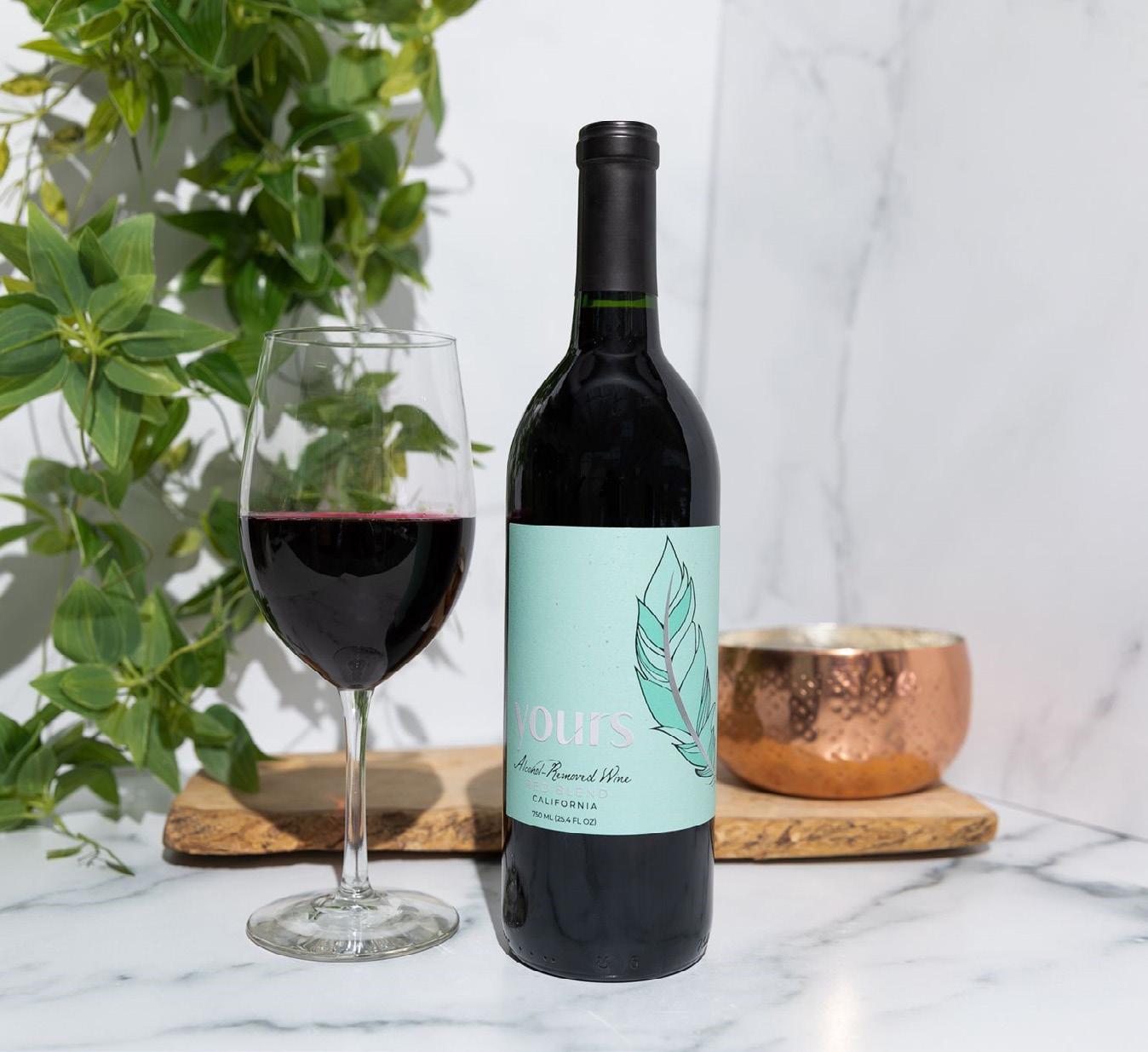
with projections indicating it could reach $24 billion by 2030. This surge, originally driven by health-conscious consumers, particularly Gen Y and Millennials, is now expanding to include Boomers seeking balance in their lives.
The rise of the no and low alcohol movement is coming at a time when wine consumption is decreasing, with Irem stating the category has declined by 7 per cent in the last 15 years. The challenge for sommeliers and the broader wine industry is how to embrace this shift. Irem emphasises that the role of a sommelier extends beyond simply selling wine: “The whole philosophy of being a sommelier is not only selling wine but understanding the consumer psychology and catering to all needs… if the consumer is asking for low alcohol and no alcohol, I think it's a duty for sommeliers to cater to this. But it is also an opportunity.”
As the wine industry faces the challenge of overproduction, with wine production often outpacing consumption, nonalcoholic wines provide an opportunity to address this issue by utilising surplus production.
Irem notes that many wineries, regardless of size, are now exploring line extensions into the no and low alcohol category due to increasing demand from importers and distributors. She says, “If there is to be economic viability and economic sustainability of the wine business, I think, it requires this (no and low alcohol wines) as well.”
Traditional criticisms of no and low alcohol wines are many. Some are too sweet, seeking sugar to replace the texture of alcohol, while others lack character and body. Producing non-alcoholic wine involves complex chemistry and technical challenges. According to Irem, one of the primary hurdles is the lack of education and expertise in this relatively new field. Winemakers, although experienced in traditional winemaking, often lack familiarity with the de-alcoholisation process. Irem highlights three key factors in creating high-quality non-alcoholic wine: the quality of the incoming wine, the technology used for dealcoholisation, and the adjustments made post-de-alcoholisation.
As she says, not all wines are suitable for de-alcoholisation, but things are changing as “the
category is improving, as the overall quality of input is improving. Ten years ago, everyone was de-alcoholising whatever they couldn't sell.” However, as the category matures, the importance of selecting high-quality wines with specific parameters has become clear. Wines free of faults and with suitable acidity, pH, and sulphur levels are preferred for de-alcoholisation. The goal is to preserve the wine's character while removing the alcohol.
In terms of process, there is not a one-size-fits-all solution. Irem explains, “Depending on the style, the quality, and the price point of the final product, there are different technologies available, but this is very important. The third step is, once it's de-alcoholised, it's not ready to bottle. Adjustments are required. There is a lot of knowledge required for that part as well.” BevZero, where Irem works, specialises in vacuum distillation, a process that removes alcohol while attempting to retain volatile aromatics. This is crucial because aromatics are essential to the wine's overall sensory profile. However, current technology still presents limitations in fully recovering and selecting specific aroma compounds. Irem's team is actively researching new equipment to improve aroma recovery and selection, with hopes of unveiling new technology soon.
When asked whether prospective no and low alcohol wine producers should seek specific characteristics in their grapes, or if specific varietals work better than others, Irem says, “We can give parameters but there is no specific DNA.” Irem recommends, particularly for red wine, to vinify with de-alcoholisation in mind…the key is to start in the vineyards. “If you choose specific clones, rootstocks, I think it's going to be much easier.” While Irem notes that no single varietal is better than others, as terroir plays too big a role in differences between grapes grown in different places, “What is really important is the
parameters of acidity, pH, because
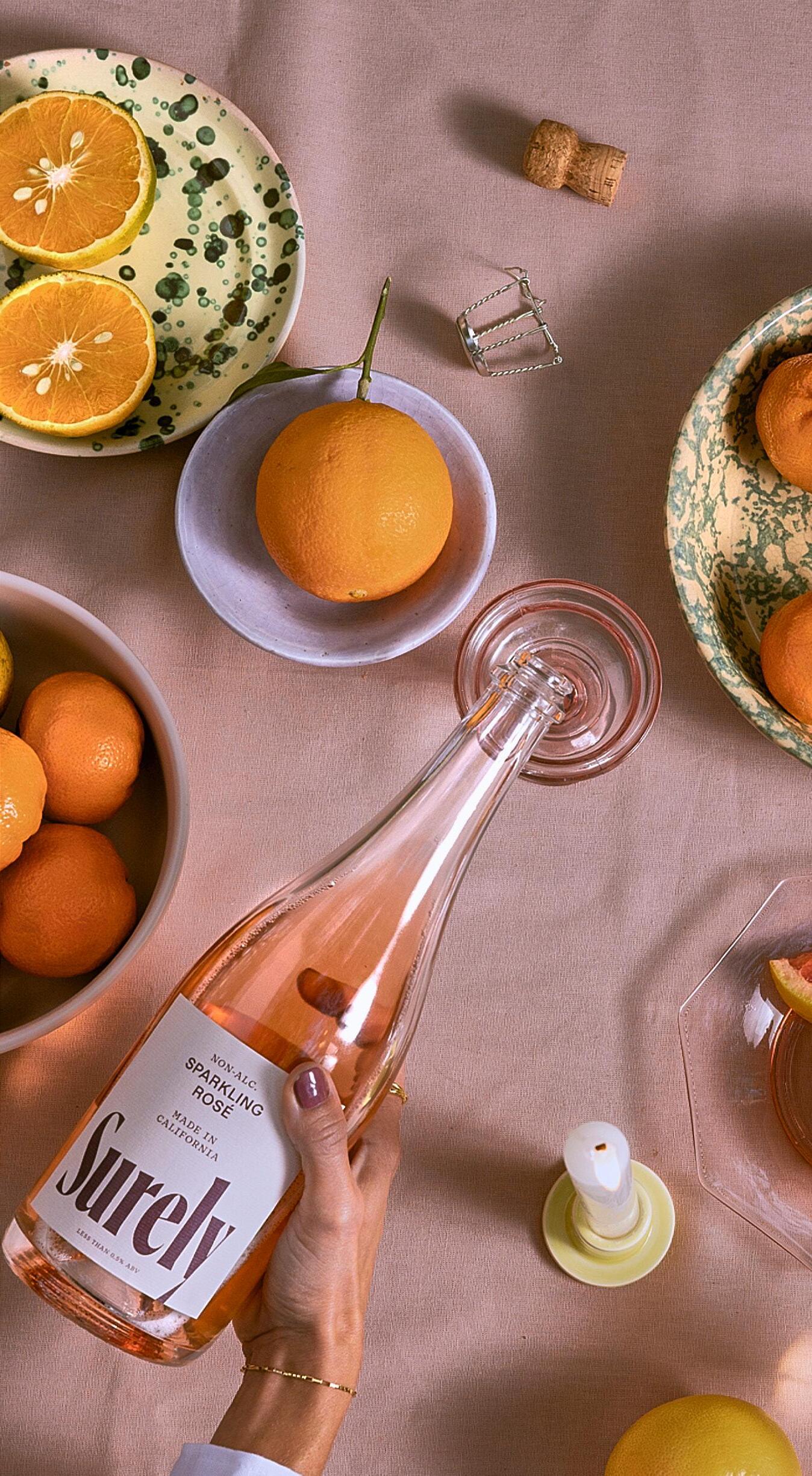
"The category is improving, as the overall quality of input is improving. Ten years ago, everyone was de-alcoholising whatever they couldn’t sell."
“Our goal is to try and select individual compounds found in the heads, hearts, and tails. However, during the heating-up process, the aroma compounds change, they change, and they become more concentrated. This doesn't mean that they are better or worse, but they change. If we can select them and then know how to work with them, then we can create many types of no and low alcohol wines.”
A critical question in the industry, and specifically for sommeliers, is whether non-alcoholic wines should be judged by the same standards as traditional wines. Irem argues
that they should not be directly compared, as the de-alcoholisation process creates a distinct beverage: “When we remove the alcohol, obviously, we are removing a very important portion of the structure. Also, alcohol makes all the aromas more pronounced. As a result, it's a different product.” While traditional wine judges assess non-alcoholic wines within their category, consumers should also consider them as alternative beverages rather than direct substitutes for alcoholic wines.
Looking ahead, the future of nonalcoholic wine looks promising, with
advancements in technology and increasing consumer acceptance. As the category continues to grow, Irem envisions winemakers adapting their vinification processes to optimise wines for de-alcoholisation. This approach will lead to betterquality non-alcoholic wines that meet consumer expectations. Irem herself embraces the no and low alcohol lifestyle, incorporating these products into her daily life alongside traditional wines. She believes that as more high-quality options become available, more consumers will follow suit.
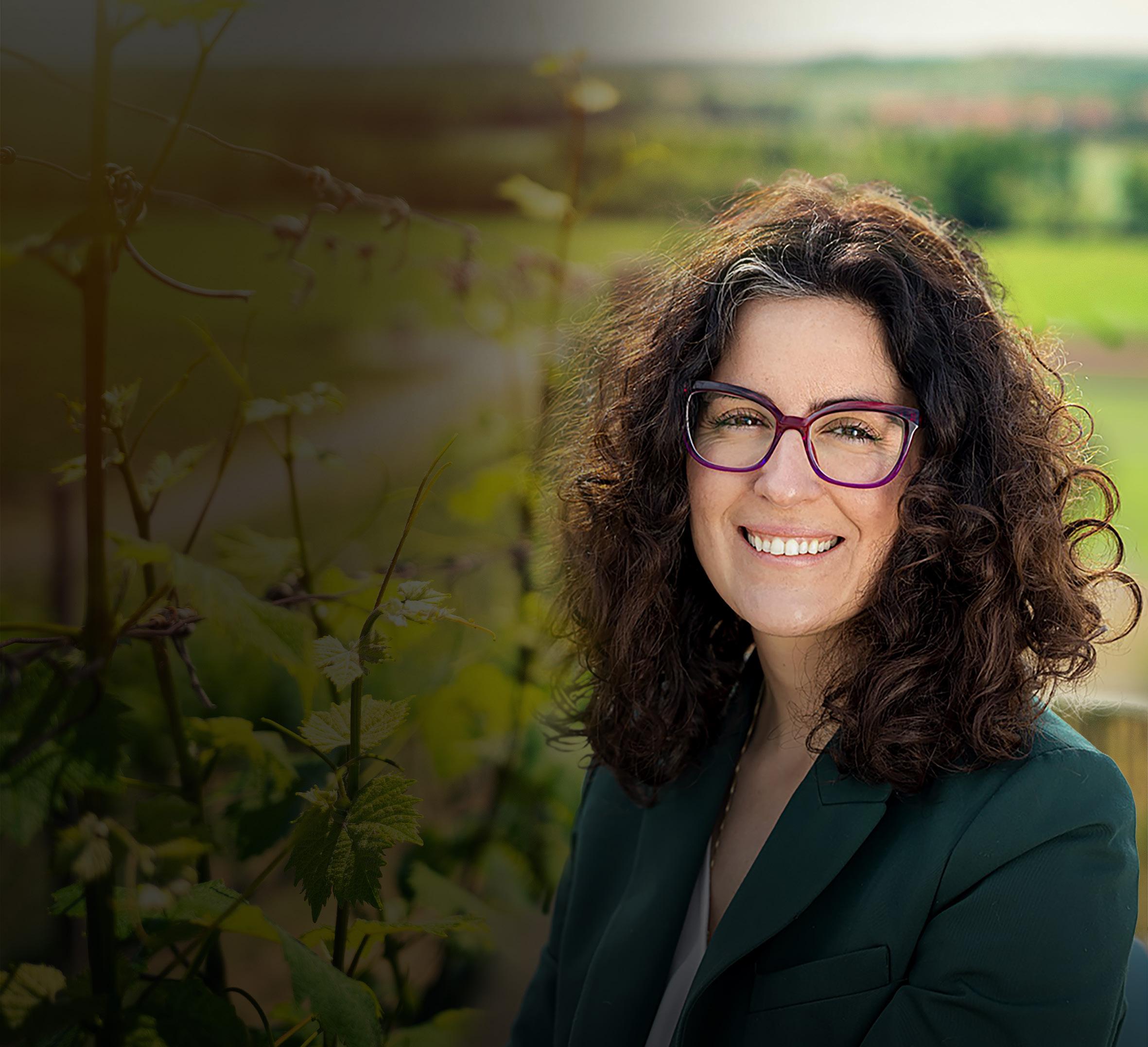






For over 135 years, Stölzle Lausitz has been a global leader in crafting high-quality, lead-free crystal glasses. Founded in 1889 in Weißwasser, Germany, the company has mastered the art of glassmaking, evolving from mouth-blown techniques to advanced machine production. Renowned for their seamless pulled stem glasses that appeal like mouth-blown, Stölzle Lausitz creates glasses of the highest precision, quality, and timeless elegance - made in Germany.
Trusted by top sommeliers, chefs, and connoisseurs in over 120 countries, their glasses not only enhance the taste of wine but also elevate the entire drinking experience. As the official glass partner of the ASI, Stölzle Lausitz proudly shares its expertise in premium glassware with the world of sommellerie.
stoelzle-lausitz.com

Whether making modern processes to create clean, low acid sake or traditional methods of Yamahai and Kimoto, which use lactic acid bacteria as a starter (shubo), to gain complexity, there are some key aroma influences along the way.

Some rice varieties are better suited to certain climates than others. Different rice varieties have different protein content and solubility; for example, Yamada-Nishiki is easily soluble at low temperatures, and its low protein content results in a fuller sake taste.
The outer layer of rice contains a large amount of fat (FATS). The more fat, the less aroma compounds the yeast produces. Also, less protein is better for creating a refined taste, so the rice is polished.
Different strains of yellow koji mold have different ratios of amylase and protease, and the sake producers choose the appropriate one for use. Koji mold produces fats and vitamins according to the amount of mycelium grown. Sohaze has strong enzymatic power, and fermentation is vigorous. To suppress fermentation and allow the yeast to produce a ginjo aroma, the amount of mycelium must be suppressed without reducing enzyme production, so tsukihaze is suitable for that style.
Sake yeast has been selected and collected from some sake breweries all over Japan based on its low-temperature fermentability and pleasing aroma. The balance of aroma components varies depending on the yeast (No.6, 7, 9, 10, 14, etc.). Recently, a yeast with a pronounced fruity aroma (No. 1801) has been bred by mutation and crossbreeding.
Low-temperature fermentation is necessary to reduce yeast biosynthesis, maintain the enzymatic activity that produces aroma, and prevent volatilisation of aroma (imagine a pilsner-style beer, for example).
More than 80% of sake is made with water, and the taste of the water itself is directly related to the taste of the sake.
The potassium, magnesium, and phosphoric acid contained in hard water stimulate the growth of yeast and koji bacteria. This produces a rich, fuller taste of sake. So sake using soft water is rather soft and smooth taste. Iron is not desired in sake brewing because it degrades the aroma and flavour.
The reaction between amino acids and sugar (Maillard reaction, aminocarbonyl reaction) causes coloration and a change the aroma from fruity to honey, dried fruit, or nut-like. The taste also becomes more complex with an increase in bitterness.
This reaction progresses faster with higher temperatures. To emphasise these changes, you can produce sake with high sugar and amino acid content and mature it at high temperatures, then leave it to stabilise at room temperature.
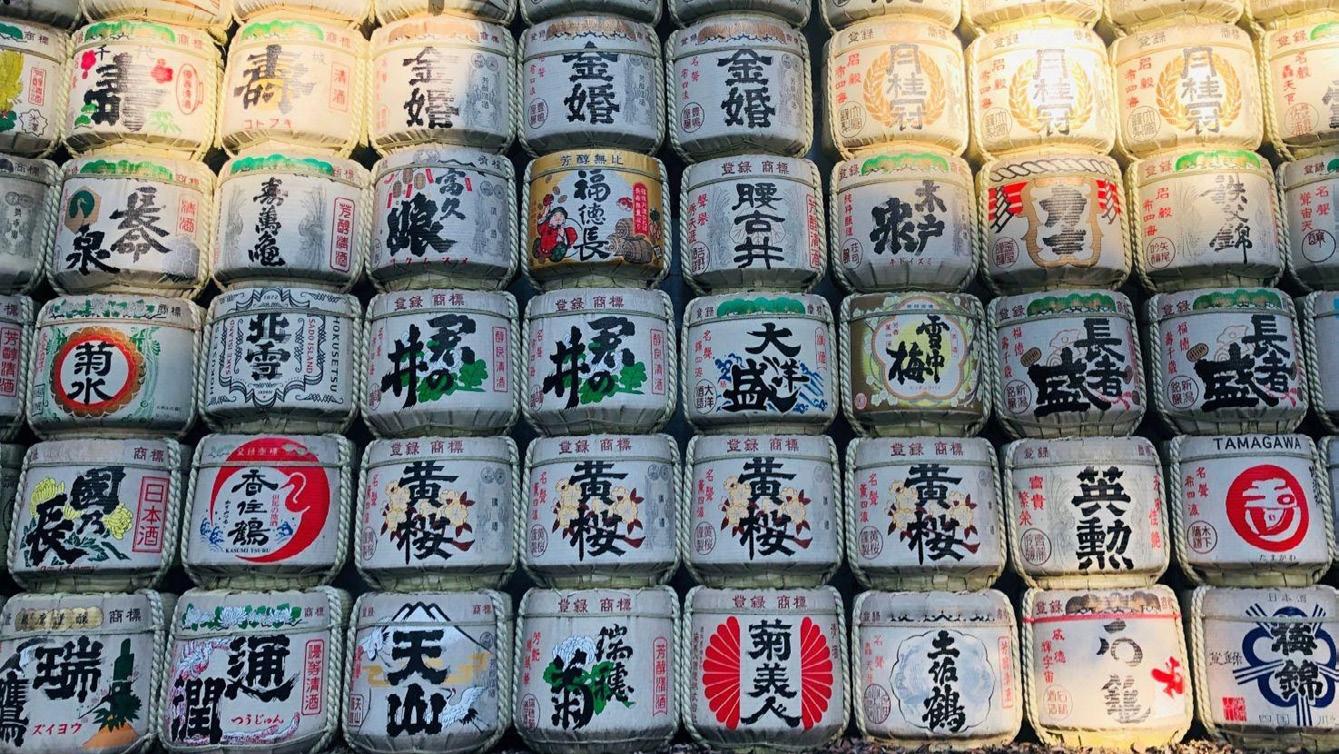


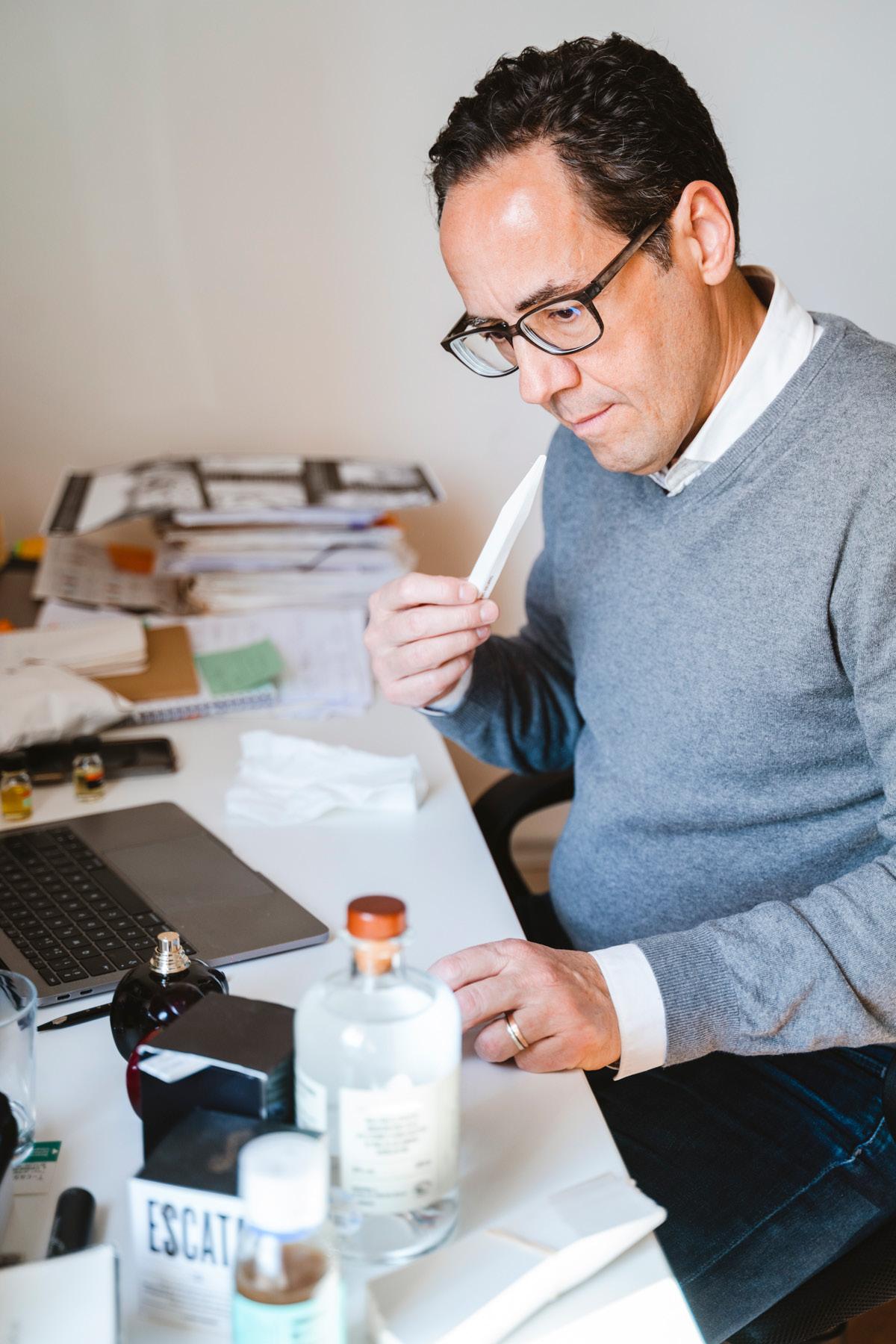
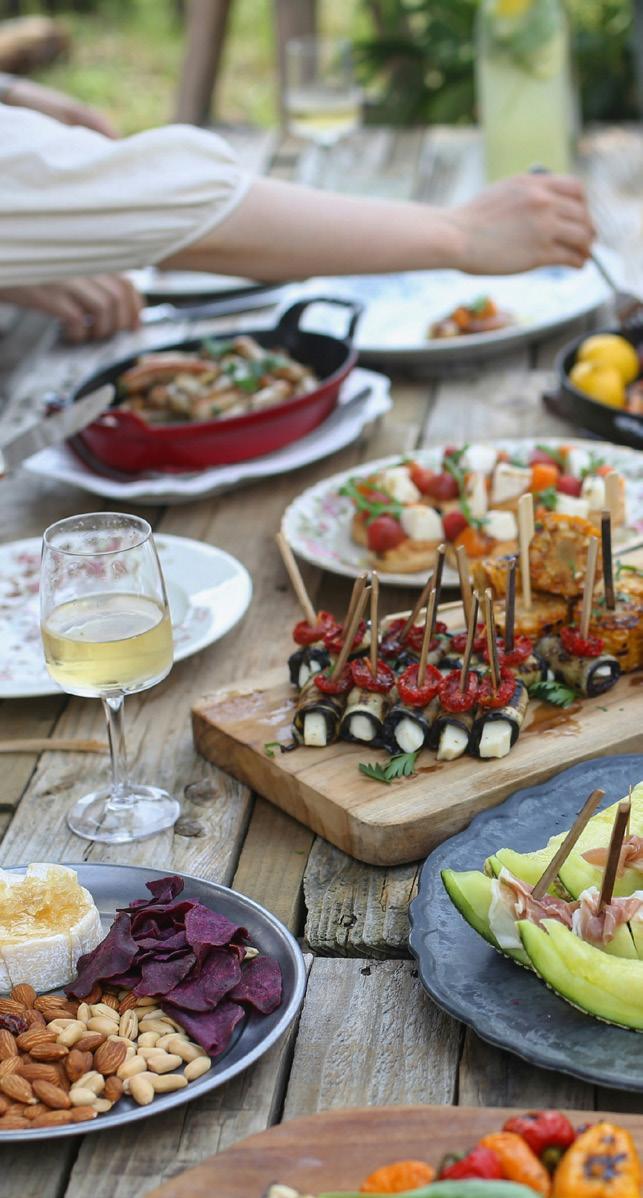

By Myles Trapp with François Chartier
François Chartier’s journey into the wine world began like many other sommeliers. Working in restaurants as a young man, he devoured wine and beer magazines, captivated by the endless possibilities for discovery. Yet it was the sensory aspects of tasting and matching food with wine that truly fascinated him. Chartier now recognises that the cornerstone of his professional career is understanding aroma and its impact on the food and wine relationship.
François champions a unique style of food and wine pairing called “aromatic synergy.” This approach involves using a £2 million gas chromatography mass spectrometer to analyse wines and foods for their dominant aromatic molecules. Chartier’s groundbreaking research has been distilled into several books, including Tastebuds & Molecules, L’Essentiel de Chartier, and the forthcoming Molecular Sommellerie
The inspiration for François' study was a pivotal wine dinner with Eloi Durbach of Domaine de Trévallon in the 1980s. Tasting the ’82 vintage, he picked up notes of game, blackcurrant, blackberry, and liquorice. He asked
his chef to prepare venison with blackberry and liquorice in the sauce. With raised eyebrows, the chef consented. The pairing was unanimously delicious. “That was the first aromatic match for me that was really crafted for the wine,” François recalls.
“At that point, I realised that when there is an aromatic match between wine and food, this overrides the physical aspects of tannin, acidity, etc. I said, ‘Wow, there is something here I need to understand.’” In the 80s and 90s, there were few good explanations of matching food with wine. Books on the subject, written by experts like Phillippe Bourguignon and Philippe FaureBrac, offered experience-based insights but lacked scientific explanations.
“From that point, I started always building on aroma. I got into a comfort zone of matching. It was never bad. Sometimes it was amazing, kind of nirvana. Temperature of wine, type of glass, quantity of the key ingredient in a dish—there are many details that can be tweaked. But it’s never bad.”
In the mid-90s, an illness forced François to radically change his diet. “I learned some new information about molecules. For example, curcumin in turmeric and lycopene in tomatoes are anti-inflammatory. But they are also aromatic molecules. This helped me to understand the aromatic molecule.” He then consulted with two leaders of molecular science: Victor Beliveau in Montreal and Pascal Chantonnet in Bordeaux. “I noticed when there’s mint and Sauvignon Blanc, it’s an aromatic match. Shiraz and black olive, same thing.” Both scientists affirmed, “François, you’ve just put your finger on something. Aromatic synergy.”
He describes the effect as 1 plus 1 equals 3. “It’s based on which molecule or molecules are over the detection threshold. Once it’s over, it creates an aromatic synergy between food and wine or between two foods like mint and parsley. It’s not about quantity; it’s about being over the threshold.”
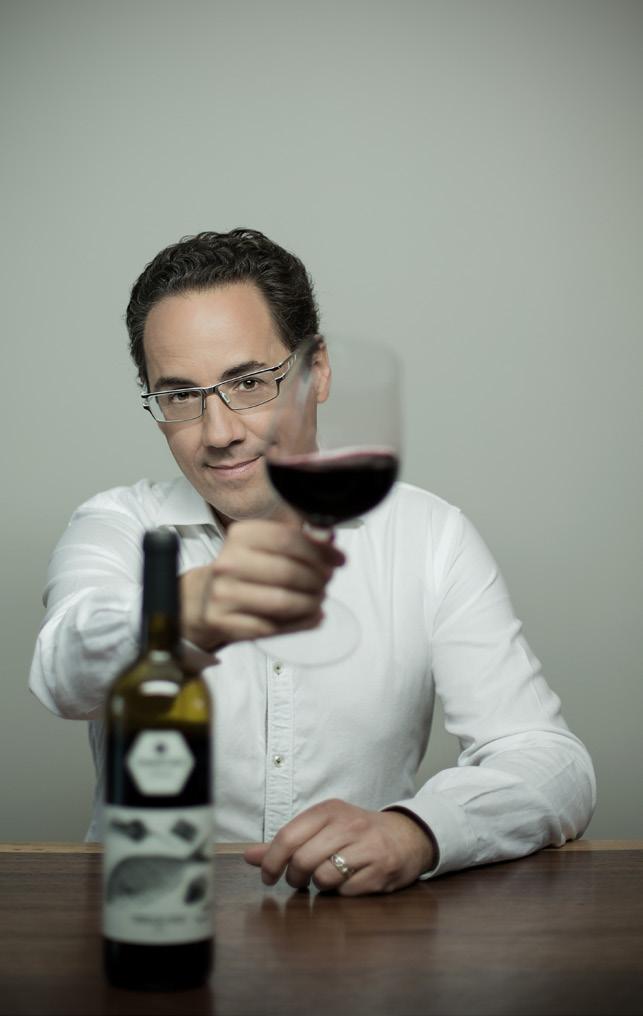
“At that point, I realised that when there is an aromatic match between wine and food, this overrides the physical aspects of tannin, acidity, etc.”
Chartier offers examples of molecular pairings: “I always take the example of tabbouleh: the mint, parsley, and couscous salad. Lebanese women five hundred years ago made the recipe, and it never changed. They noticed subconsciously that parsley and mint are meant to be together. Not rosemary and mint. You know, parsley alone can be boring. But parsley and mint, just wow! I love tabbouleh. And then a glass of Sauvignon Blanc, Gavi, Tokaji (dry furmint), or sencha green tea, you get it. They all have the same vibration.”
Syrah goes with black olive, Vin Jaune with curry or maple syrup. Some of the more outlandish examples include lamb prepared with rosemary and Riesling, beef served with a coffee reduction and Gran Reserva Cava, and perhaps the oddest of all: raspberry with nori seaweed and Loire Cabernet Franc.
Chartier explains pairing beef with coffee reduction and Gran Reserva Cava: “The more there’s ageing on the lees, the more amino acids. The more autolysis of the lees, the more you get this kind of aroma. It’s like a cooked pyrazine coming from oak and/or autolysis: a Maillard reaction. If you serve beef with a reduction of coffee or grated 24-month parmesan cheese with Gran Reserva Cava, served a bit warmer than normal—fabulous. Why? There’s a lot of amino acids in parmesan cheese and there’s a lot of Maillard reaction in coffee when it’s grilled or roasted. All of that is the same molecule of Gran Reserva Cava. You don’t think of drinking a glass of Cava with your beef.” The Maillard reaction is a reaction between amino acids and sugars in the cooking process which creates compounds called melanoidins, which provide browned food its distinctive flavour.
Consider lamb with rosemary and Riesling. “You can cook the lamb full of rosemary or surrounded with rosemary and serve a Riesling. And people go crazy.” Riesling and rosemary share the same dominant aromatic molecule: terpenes. “And it doesn’t matter what type of Riesling it is: dry, bone dry, Vendange Tardive, Sélection Grains Nobles,

“The more knowledge, the more capability of tasting correctly. If you already have in your memory bank that black pepper is rotundone and rotundone is Shiraz, that helps you. Many sommeliers have told me that the knowledge of molecules has helped them so much with wine tasting.”
they will all match. After that, it’s a matter of subjectivity which style of wine you like the most.”
As far as nori seaweed and raspberries, “I didn’t come up with raspberry and nori to be eclectic. I was searching and I found a connection between raspberry, seaweed, and violet. (These foods happen to share the same dominant aromatic molecule, beta-ionone, with wines made from Cabernet Franc and Mencía). And Ferran Adrià (former El Bulli chef
and François’ partner in crime) said, ‘Nobody mixes raspberry with nori—especially in Japan.’ And he was a real freak about Japanese food. So he said, ‘let’s do it!’ So you take a 2-inch by 2-inch square of nori and put a fresh strawberry in it: it’s so good, it’s so perfect.”
When asked if he has debunked any traditional wine and food pairings, Chartier replies, “Some work. Barolo and truffle is just amazing when the balance works with the truffle and the evolution of the wine. Look at
Bordeaux: Pauillac and lamb. Lamb is full of thymol. Thymol is thyme. Thyme is the South of France. It’s garrigue. It’s Garnacha, it’s Cannonau in Italy. Not that Pauillac and lamb is no good, but if you want the best…”
“There are nuances. We forget that there are nuances because we want to help people understand. If you start with too much nuance, the public cannot follow you. If you’re in a restaurant, and you have oysters and you say: ‘Let’s take a Muscadet. You will see, it will go well.’ Well, if your oysters are loaded with iodine and have a mineral aroma and your Muscadet is a fruity one, it will be very metallic in your mouth. And the converse is the same. If your Muscadet is very mineral and dry and your oysters are very cucumber-y, it won’t fit.”
Some critics fault Chartier’s methods for ignoring the structural principles of food and wine pairings, which emphasise tannin, acidity, alcohol, body, and sweetness. Isn’t it blasphemy to eschew those fundamental aspects of taste?
François replies, “I’m talking about aroma. I’m not saying anywhere that tannins and acidity are wrong. I’m just bringing new knowledge to matching wine and food.” Chartier’s earnestness and empirical approach to a subject traditionally dominated by conjecture and tradition are compelling.
François explains that the 1 plus 1 equals 3 effect magnifies the flavours being matched. For instance, if you ask someone to recall the best steak they ever had, they might say, “it was just super beefy. It was the beefiest steak I ever had.” Chartier agrees, “Exactly. If you eat a piece of wagyu beef cut in two, and one piece has salt and the other does not, the salted piece will be beefy as hell. Why? Because the salt augments, complexifies, and magnifies the umami of the wagyu.”
François often draws analogies to music. When asked about the backlash to molecular gastronomy and the return to ingredient-first cooking, he points out: “You still need to understand a dish that appears simple to do better matching. You can play music by ear and learn a song on your guitar, and that’s great. But the day you learn to read music, that same song you’re playing can be played 1,000 different ways. And now you can talk with other musicians about what you’re playing. Going back 30 years, some people were afraid to see science going in the kitchen and dining room. It’s not about going in there; it’s about going in here (he points to his head). It’s being able to communicate with each other and create a dialogue. It’s like AI. It’s just a tool.”
I asked François if his research into dominant aroma molecules can help sommeliers with blind tasting examinations. “For me, it is a kind of solfège of wine tasting,” he says. According to Wikipedia, solfège is a method where “syllables are assigned to the notes of the scale to assist the musician in audiation, or mentally hearing, the pitches of a piece of music, often for the purpose of singing them aloud.”
As a relative of the Von Trapp family from The Sound of Music, your author was pleased to learn the technical term for singing “Do Re Mi”. François returns to his point: “The more knowledge, the more capability of tasting correctly. If you already have in your memory bank that black pepper is rotundone and rotundone is Shiraz, that helps you. Many sommeliers have told me that the knowledge of molecules has helped them so much with wine tasting.”
We pause for a moment to reflect on why “molecular science” seems to appeal more to chefs than sommeliers. “Sommeliers don’t like when I say this, but I think it’s true. Tastebuds & Molecules is about creativity. It’s science, but it’s about creativity. Chefs are more creative. To be a sommelier, you don’t need to be totally creative.” I agree with him and note that sommeliers are often pressed for time during service, so it’s easier to lean on traditional pairings and go for the easy wins to save time. François adds, rightfully, “Customer needs come first. There’s a good part of clients coming who just say ‘I want that Rioja and I want it now.’ Or, ‘I want to drink Romanée-Conti tonight’— even if it doesn’t go well with what they’re eating. There are many aspects to the work of a sommelier. But still, you need creativity. You need to organise

your service—your glassware, the order of tables you visit. Creating dishes as a chef is another level, not better, just different. You mix different things, different ingredients. This is my explanation of why chefs and mixologists grab Tastebuds & Molecules.”
In the end, maybe a scientific approach to wine pairing could enhance the creativity of sommeliers everywhere. It reminds me of the French literary movement Oulipo, whose major tenet is: constraints breed creativity. I, for one, am grateful to François for expanding the range of gustatory experience beyond its known frontiers. What unexpected pairings are waiting to be discovered that could offer our tastebuds the most profound pleasure they’ve ever encountered?
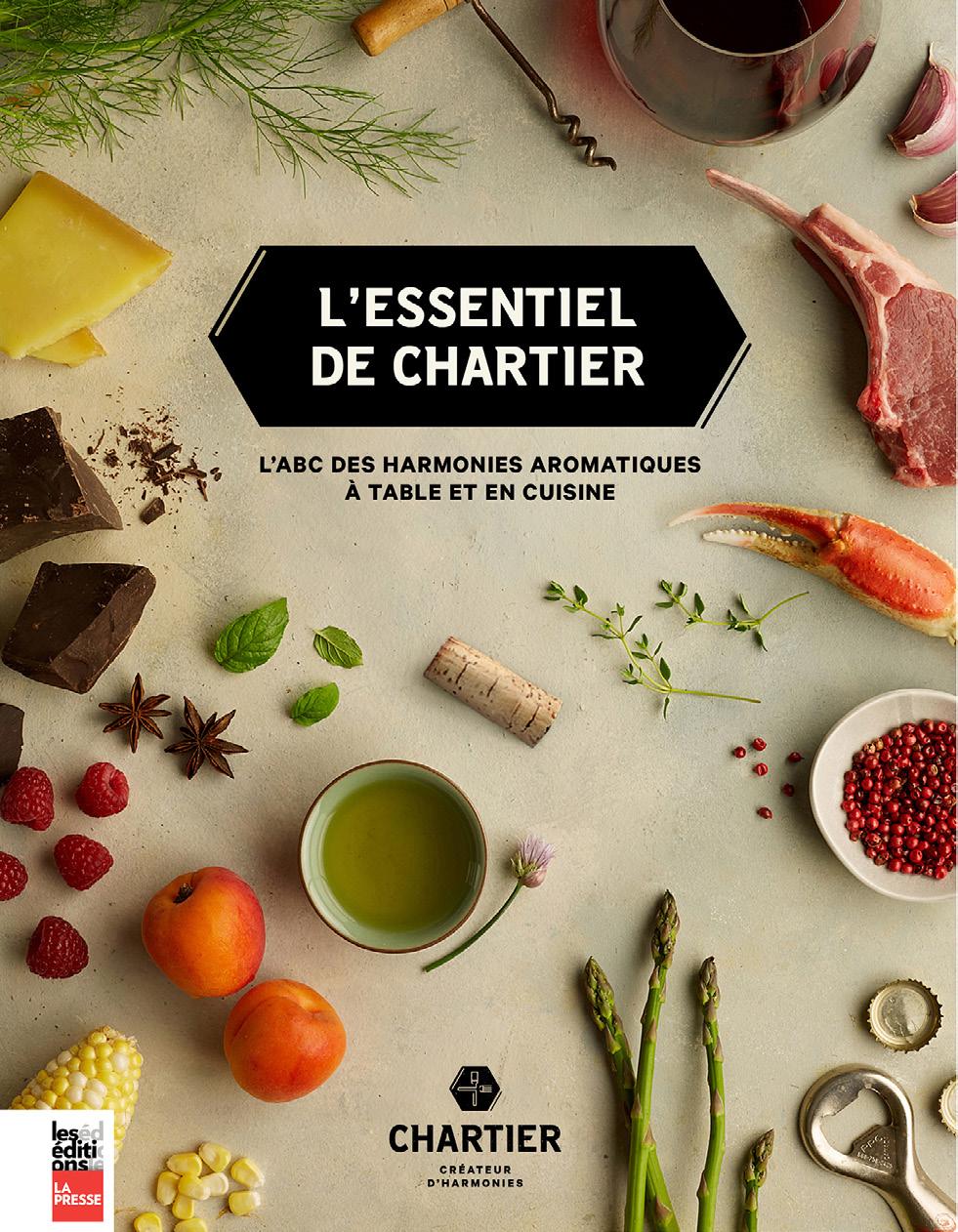
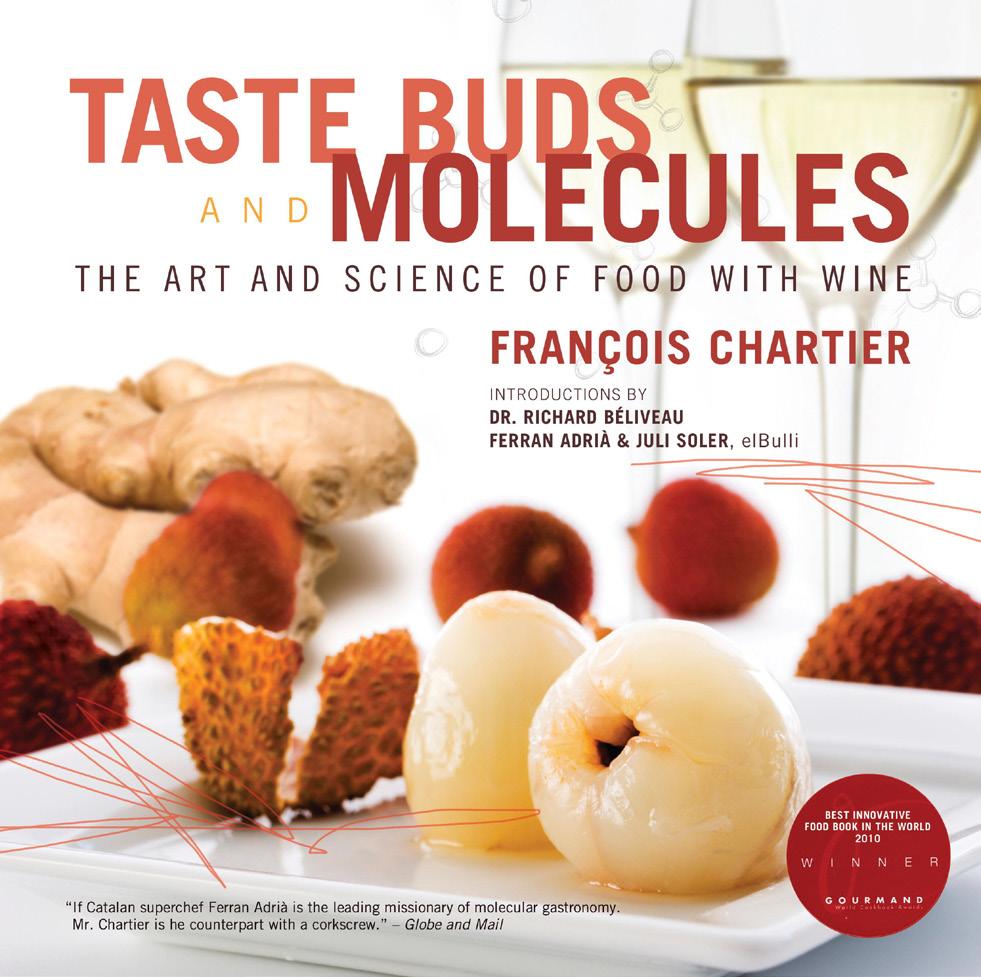
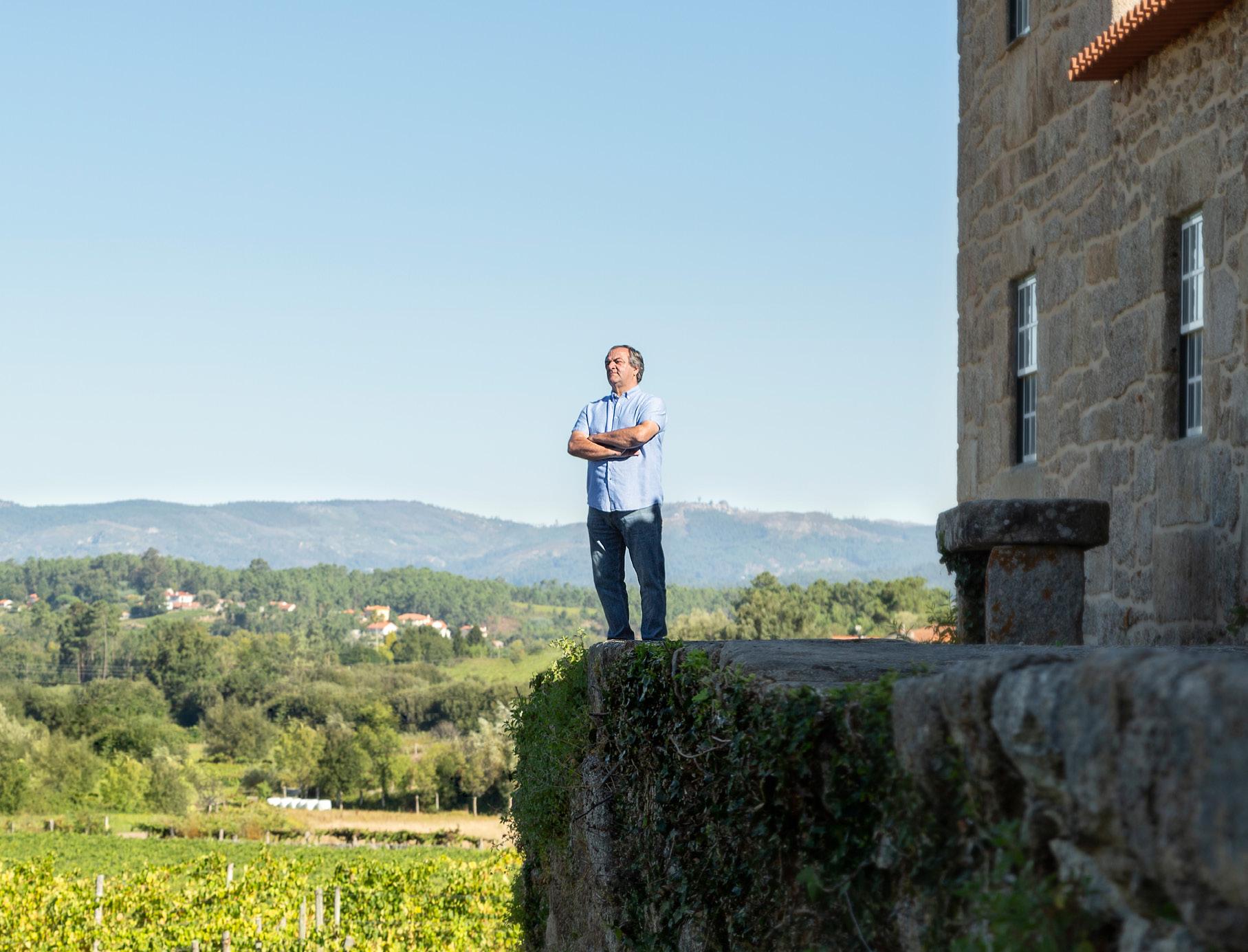

by Sarah Ahmed


Portuguese winemakers excel at blending but, in Monção e Melgaço (‘MM’), the chemistry between the Alvarinho grape and this Vinho Verde sub-region (one of nine) has proved irresistible. It is home to 59% (1,521ha) of the total Alvarinho plantings in Vinho Verde DOC.
Age-worthy and gastronomic, MM Alvarinho has exploded Vinho Verde stereotypes. A complex interplay of grape chemistry, climate, soil, geology and viticulture wed to wine-growing expertise accounts for stellar quality.
According to leading light Anselmo Mendes, Alvarinho rarely produces over 6,000kg/ha. When vinified, he reckons it “is probably the grape variety with the lowest yield in the world with an average of 60% (1,000kg – 600l),” because Alvarinho’s small bunches of thick-skinned berries have a high ratio of skin and seeds to juice.
Happily, when fully ripe, these bullets of flavour account for impressive fruit intensity and high tannin. With good oxidation resistance, even modest examples evolve well, whilst the best develop terrific complexity over a decade or more.
Inland, shielded from Atlantic influence by western ranges, MM is relatively warm and dry, so Alvarinho fully ripens consistently. Mountains to the north, south and east (a hydrographic basin) bring continental influence; hot days and cool nights during summer preserve freshness and aroma.
With 60 Alvarinho-focused producers exploiting different terroirs and techniques, styles are diverse. Valley slopes with poorer, highly permeable granitic soil lend themselves to mineral, saline wines, as does elevation. Closer to the river Minho and its tributaries, granitic soil richer in organic matter, notably nitrogen (which increases aroma precursors) amplifies fruit and florals. Training method, aspect and, increasingly, elevation (from 50m-1,100m) also play into profile.
In the winery, Alvarinho is made with and without temperature control, in stainless steel, wood, cement and clay. Pre-fermentation skin contact and ‘curtimenta’ (fermenting on Alvarinho’s high tannin skins), lees-ageing, occasionally malolactic fermentation and flor, enhance structure, texture and complexity.
Since 2021, single-varietal Alvarinho from any Vinho Verde sub-region can be labelled DOC Vinho Verde. Hot on the heels of MM’s trailblazers, ambitious examples are fast emerging, including another point of difference - Alvarinho grown on the Cávado sub-region’s atypical schist strip. Make no mistake, Vinho Verde is an Alvarinho (a.k.a. Albariño) playground and paradise.
With Mark DeWolf, Editor ASI Magazine
Cooking is as much part of my life as wine. In my non-ASI work life I am often creating recipes or producing cooking videos. Cooking and wine are part of my DNA, but I tend to take a logic, tinged with romantic approach to food and drink pairing. I was curious to know how my instinctive pairings for dishes created by François Chartier would compare to his deductive and science-based approach. Would are pairings match? Whose pairings do you prefer?
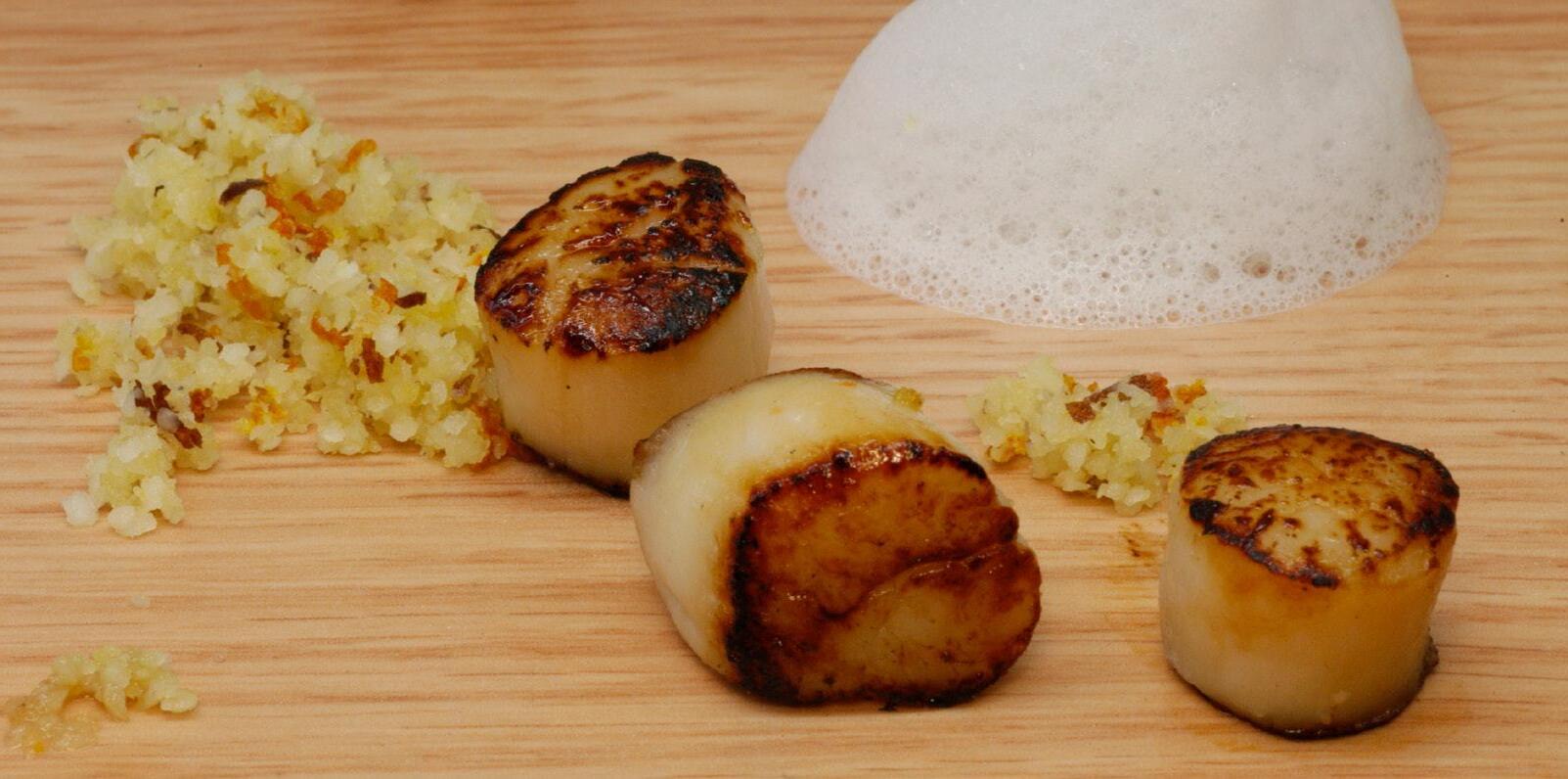
Pan-Seared Scallops,
Blood Orange Brazil Nut Couscous, Ginger Coconut Milk
12 U10-grade scallops
50 g (1 cup) of Brazil nuts
Zest of 1 blood orange
30 ml (2 tablespoons) of olive oil
4 g (1 teaspoon) of fresh grated ginger
1 tin of coconut milk
Juice from half a lime
Salt, ground white pepper
Few drops of olive oil
Fleur de sel
Directions:
Remove the muscle on the side of the scallops, place them on a paper towel and reserve in the refrigerator. Using a cheese grater, make a fine meal of the Brazil nuts. Place the blood orange zest in the olive oil. Grate the ginger using a microplane (fine zester). Note: This is easier if the ginger has been frozen ahead of time. Empty the coconut milk tin into a saucepan. Add the ginger and lime juice. Season to taste. Heat and emulsify using a hand mixer. Harvest the foam that rises to the top. Place the Brazil nut meal in a salad bowl and drizzle half of the olive oil and blood orange zest onto it. Salt sparingly. Heat a bit of olive oil in a non-stick pan and seared the scallops for 2 minutes on each side. Place the Brazil nut couscous on a plate, top with the pan-seared scallops and ginger-lime coconut milk emulsion. Top each scallop with a few grains of fleur de sel and drizzle with a little zested olive oil.
François’s Pick: Chardonnays, Grenache blanc and/or Rolle
Since all the ingredients here are complementary to wines that have been barrel-aged, it is that aromatic path that should be followed, and the wine should be served cool, but not cold, around 14 ºC, as is the case with all aromatically generous and slightly woody white wines. This basically includes all Chardonnay-, Grenache Blanc- and Rolle-based white wines from the South of France, all the Chardonnays from the New World and other whites dominated by either the Roussanne or Sémillon Blanc grapes. Perfect for lovers of generous, textured and woody red wines, this recipe will be best served with a white wine created for red wine afficionados! The pan-seared scallops, Brazil nuts, coconut and ginger are all foods that are complementary with oak barrel aged wines, especially Chardonnays, Grenache blanc and/or Rolle. The Brazil nut couscous is foolproof, requires no cooking and really magnifies the flavor of that nut which, ironically, does not taste much when eaten straight… An extremely simple recipe that allows for great creativity!
Editor’s Pick: South African Chenin Blanc or Grand Cru Classé de Graves
There’s a certain level of elevated hominess to this dish. When I look at this dish, I think of the sear on the scallop and the brazil nuts couscous asking for a wine with a touch of oak toastiness. The other elements to consider is the creamy texture of the scallops and the Brazil nut couscous, and the fragrance afforded by the ginger and lime. Logically, I think of a medium-bodied wine with enough texture to stand up to the richer
elements of this, a hint of exotic fragrance, a mild sweetness to complement the coconut milk. Instinctively, I veer to a modern style of South African Chenin Blanc that strike a balance between malolactic, and oakaged richness and the vibrancy afforded by the grape itself. Another style that works for similar reasons are the Grand Cru Classé de Graves white wines, especially those with a touch of Muscadelle in the blend.
François’s Pick: Sangiovese
What you need here is a sun-soaked red wine with warm tannins, which corresponds to the umami profile. A classic tartare revisited to finetune the synergy with Sangiovese reds, so that it yields an even more gourmet result. To achieve this, we went down the umami aromatic path, of which beef is part, as well as the Parmesan and shiitake. Adding the beet vinaigrette, which is on the aromatic path of oak barrels, consolidates even further the harmony with the Sangiovese!
Editor’s Pick: Franken Riesling or Lambrusco di Sorbara
Some of my favourite tartare experiences have involved fresh, dry and off-dry Rieslings. The wine elevating the flavours of the tartare and with enough intensity to not get lost in the pairing. It would be easy to get distracted by the umami of balsamic, shitake mushrooms, and Parmesan, but I still think dry Riesling works. Perhaps a fullerbodied version from Franken, although if guided by my heart, I might try pairing a Lambrusco di Sorbara taking advantage of its frizzante style to help cut through the beef, while its acidity elevated the umami flavours.

Ingredients (tartare sauce):
2 shallots, minced
45 ml (3 tbsp) Dijon mustard
15 ml (1 tbsp) balsamic vinegar
Tabasco, to taste
60 ml (1/4 cup) olive oil
15 g (1 tablespoon) chopped capers
Sea salt and fresh cracked pepper
Tartare
15 ml (1 tbsp) butter
1 container (8 oz) fresh shiitake mushrooms, cleaned, diced 454 g (1 lb) beef filet, finely minced
30 ml (2 tbsp) olive oil
1 egg yolk
Parmesan shavings
Red beet vinaigrette
Directions:
Start by making the tartare sauce. In a large mixing bowl, combine all sauce ingredients except the oil and mix evenly. Incorporate the olive oil to the mix. Reserve. In a pan, melt the butter and sauté the mushroom until they have a nice golden color. Remove from the heat and let cool down to use in the final preparation. In a large mixing bowl, mix together the beef, mushrooms, tartare sauce and egg yolk. Mix evenly. Season to taste. Cover with a cling film and refrigerate.
To finish, use a cookie cutter to shape the tartare in a plate. Decorate the plates with the beet vinaigrette which will be used as a complementary sauce and top the tartare (patties) with Parmesan shavings.
With Lukasz Gớrski, Sommelier “Butchery and Wine”, Warsaw
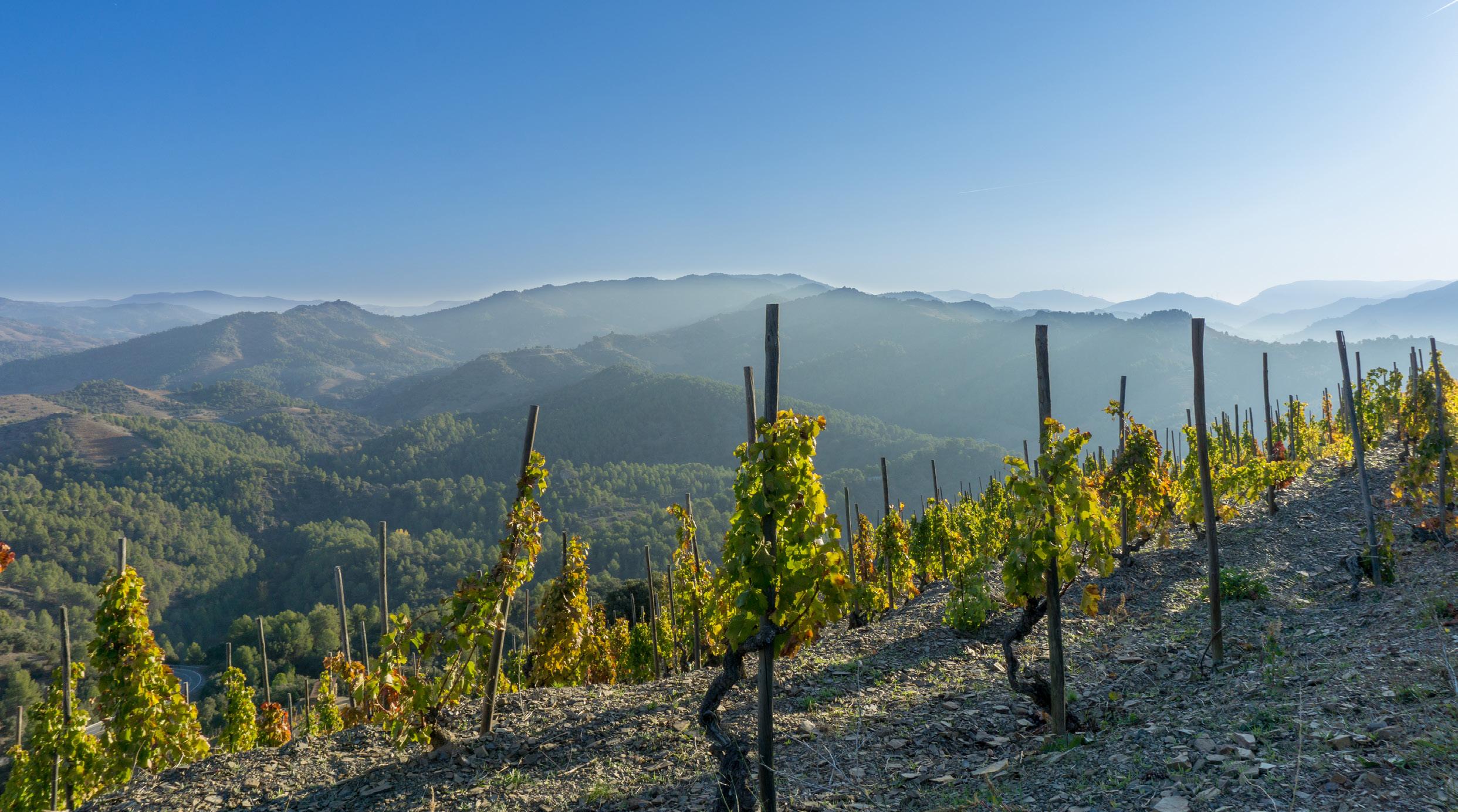
Minerality is a concept that has sparked both intrigue and debate within the wine community. Sommeliers, winemakers, and wine enthusiasts often find themselves divided on what exactly minerality is and how it should be described. To shed light on this contentious topic, we sat down with Łukasz Górski, a sommelier with a nuanced perspective on minerality, to explore its implications and manifestations in wine. Górski finished first in the 2023 Chaîne des Rôtisseurs Jeune Sommelier competition.
When asked if he uses the word "minerality" to describe a wine, Górski affirmed, "Yes, I’m familiar with this word. I’m aware it could be controversial because it is difficult to explain its meaning precisely. Nonetheless, from my point of view, it is useful." This admission highlights the dual nature of minerality—both its contentiousness and its utility.
For many in the wine industry, minerality serves as a shorthand for certain qualities in wine that are otherwise difficult to articulate. It is not a straightforward descriptor like "fruity" or "herbaceous."

Instead, it encompasses a range of sensory experiences and environmental influences. For Górski minerality can evoke childhood memories for some people, such as the taste of rocks or chalkboards. This personal connection to past experiences can create a unique perception of minerality in certain wines, such as Chablis.
Górski describes minerality as a multifaceted concept influenced by the environment, particularly the soil. "For me, it is the environmental
“Trends come, trends go... In my opinion, there's nothing wrong with using the word 'minerality'. As long as we all understand each other, it's good!”

“I’m aware it could be controversial because it is difficult to explain its meaning precisely. Nonetheless, from my point of view, it is useful.”
influences on the wine, such as soil, for example: rocks, fossils, flint or gravel, etc. Salinity is also described as minerality, often derived from volcanic soil, but sea influences are important as well.” The question of whether minerality is directly related to the mineral content of the soil is a complex one. Lukas believes that while minerality is based on soil, other factors, such as proximity to the sea, can also play a significant role. This suggests that minerality is not solely about the soil's mineral content but rather a combination of environmental factors that influence the wine's character.
Despite its complexity, Lukas sees value in using the term "minerality." He states, "Trends come, trends go... In my opinion, there's nothing wrong with using the word 'minerality'. As long as we all understand each other, it's good!" For Lukas, the term serves as a flexible descriptor that can encompass a group of flavors, including salty and stony notes, much like how we describe wines as fruity or herbaceous.
The ongoing debate over whether to use the term "minerality" is seen by Lukas as somewhat overblown. He appreciates the diversity of language in the wine world, which allows individuals to express their perceptions in their own unique ways.
One intriguing aspect of minerality is its apparent rarity in red wines, or at least the term is less often used to describe red wines. Górski explains that this could be due to the complexities introduced by winemaking techniques and the influence of oak. "Oak influences and complexity can overshadow this subtle nuance," he notes. However, he points out that minerality can still be found in certain red wines, such as those from Priorat or from volcanic soils as those found on Mount Etna, Sicily.
When asked about his favourite wine styles that exude minerality, Górski, expresses a fondness for Mosel Riesling. "I have to say that I truly appreciate Mosel Riesling for its minerality. I extremely like the crisp minerality derived from slate soil, which creates a pinching sensation in the mouth." This highlights the unique way in which minerality can manifest in different wines, creating distinctive tasting experiences.
The concept of minerality in wine is both elusive and captivating. While it may not have a precise definition, its value lies in its ability to capture the interplay of environmental factors and personal experiences. For sommeliers like Łukasz Górski, minerality is a useful tool in describing the complex and varied world of wine. As trends in wine language continue to evolve, minerality remains a testament to the diversity and richness of wine appreciation.


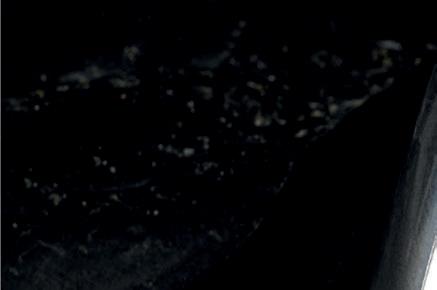


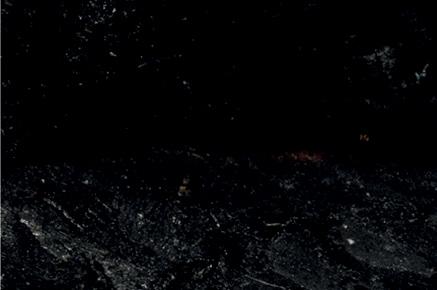





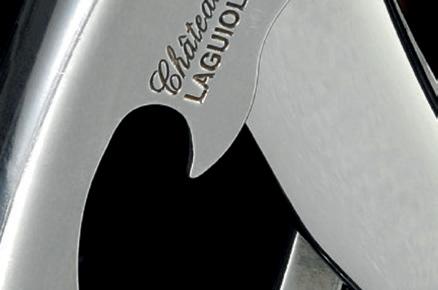



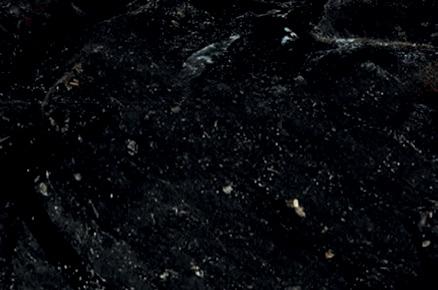




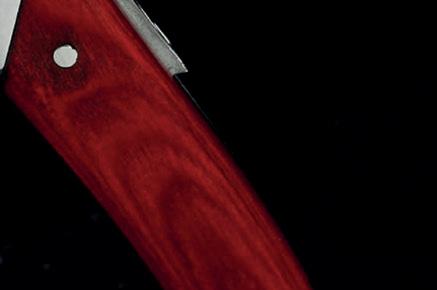



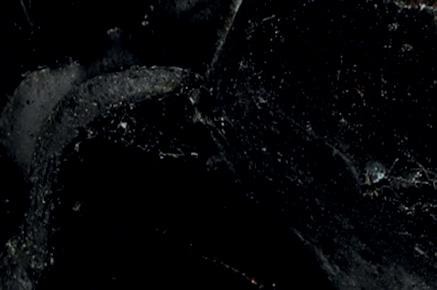






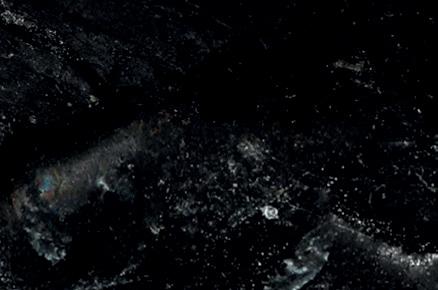
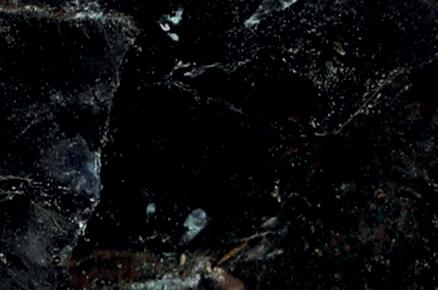




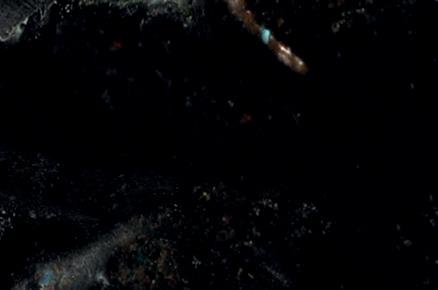
www.maison-chateau-laguiole.com contact@maison-chateau-laguiole.com


On the eve of the next iteration of ASI Bootcamp, set to be held next month in Seville, Spain, we asked Union of Spanish Sommelier Associations (UAES) president Rafael Bellido about his vision of sommellerie in Spain, how his association is addressing education and why they bid to host Bootcamp. Bellido in addition to his role as president of the Union of Spanish Sommelier Associations (UAES) is the Academic Director of Andalusia's Master in Oenology, Sommelier, and Winery Management, and is a prominent figure of Spanish sommellerie. His career showcases his passion for gastronomy, collaborating with chefs such as Ferran Adrià and Gordon Ramsey. He has led establishments such as Oxo Tower and La Mojigata, and in marketing capacity has advised brands such as Nespresso and Heineken. An active member of the Academy of Gastronomy and Tourism of Andalusia, he also has experience as a food critic for the Repsol Guide. Bellido is dedicated to training sommeliers and organising renowned gastronomic events.
ASI: How do you measure the success of the Union of Spanish Sommelier Associations (UAES)?
Rafael Bellido (RB): We measure the success of the Spanish Association of Sommeliers on several fronts. Of course, the number of educational offers, members and associations is crucial, but we also value the quality of our activities and the impact they have on sommeliers' careers. We focus on how our initiatives raise the knowledge, skills and recognition of our members nationally, as well as internationally. In addition, measuring success includes seeing how many of our sommeliers work in the world's best restaurants, achieve top positions in the global industry.

ASI: As a relatively large country with several unique and distinct cultures, is it a challenge to get everyone aligned with the same vision?
RB: Definitely! Spain is rich in cultural diversity, which makes our work both exciting and challenging. However, this diversity is also our strength. We work hard to respect and celebrate our different wine and culinary traditions while uniting under a common vision of excellence and professionalism. The key is constant communication and finding shared goals that inspire us all. We are all under the same umbrella: our passion for wine.
ASI: As a wine-producing country, do you inherently focus your efforts on Spanish wine knowledge?
RB: Although we have a strong focus on our national wines, it would be a mistake not to consider the richness of the global offer. The training is comprehensive, covering both Spanish wine and international wines and beverages. We want our sommeliers to be ambassadors of Spanish wine around the world, but also to have a broad and deep knowledge that allows them to stand out in any international context.
ASI: What are your future educational goals?
RB: Our future educational goals include the expansion of continuing and specialised training programmes, as well as increasing international exchange opportunities. The ASI guidelines and certifications have been instrumental in standardising and raising the level of our sommeliers. They have provided a framework that ensures our educational offerings are up to international standards, greatly benefiting our members.
ASI: This September you will be organising the ASI Bootcamp. Why was it important for you as an association to organise this event? What are some of the benefits you hope to achieve for your sommelier community?
RB: The ASI Bootcamp is a unique opportunity for us. It allows us to bring together the best young sommeliers from different regions of the world and gain experience in an intensive, immersive and collaborative learning environment. The aim is to provide a platform for knowledge sharing, advanced skills development and strengthening the sommelier community. Ultimately, the world's best young sommeliers will learn from the best. We hope that participants will leave with new perspectives, enriched networks and a greater motivation to pursue excellence. In Spain we have not had such a powerful international event in the world of wine until now. We are proud and delighted to be able to do it here.
ASI: What about the Spanish food and beverage industry are you most excited to show to visiting sommeliers?
RB: Diversity and innovation! Spain not only has an extraordinary wine heritage, but it is also at the
forefront of world gastronomy. We are excited to show how our traditions merge with contemporary creativity. From the unique wines of each region to avant-garde cuisine, there are a host of experiences that we believe will leave a lasting impression on visiting sommeliers.
ASI: Looking to the future of your association, what do you hope to achieve in the next 3-5 years and beyond?
RB: In the coming years, we hope to further expand our educational offer and our international networks. We would love to organise high-profile competitions such as ASU Best Sommelier of the World or the ASI Best Sommelier of Europe, Middle East and Africa. We are also working on initiatives to foster young talent and promote sustainability in sommellerie. Ultimately, our aim is to continue to raise the profile of Spanish sommeliers on the global stage and create opportunities that will propel their careers to new heights.
“Although we have a strong focus on our national wines, it would be a mistake not to consider the richness of the global offer.”
By Joseph Mounayer, President ASLIB (Association des Sommeliers du Liban), ASI Magazine Regional Correspondent, The Middle East
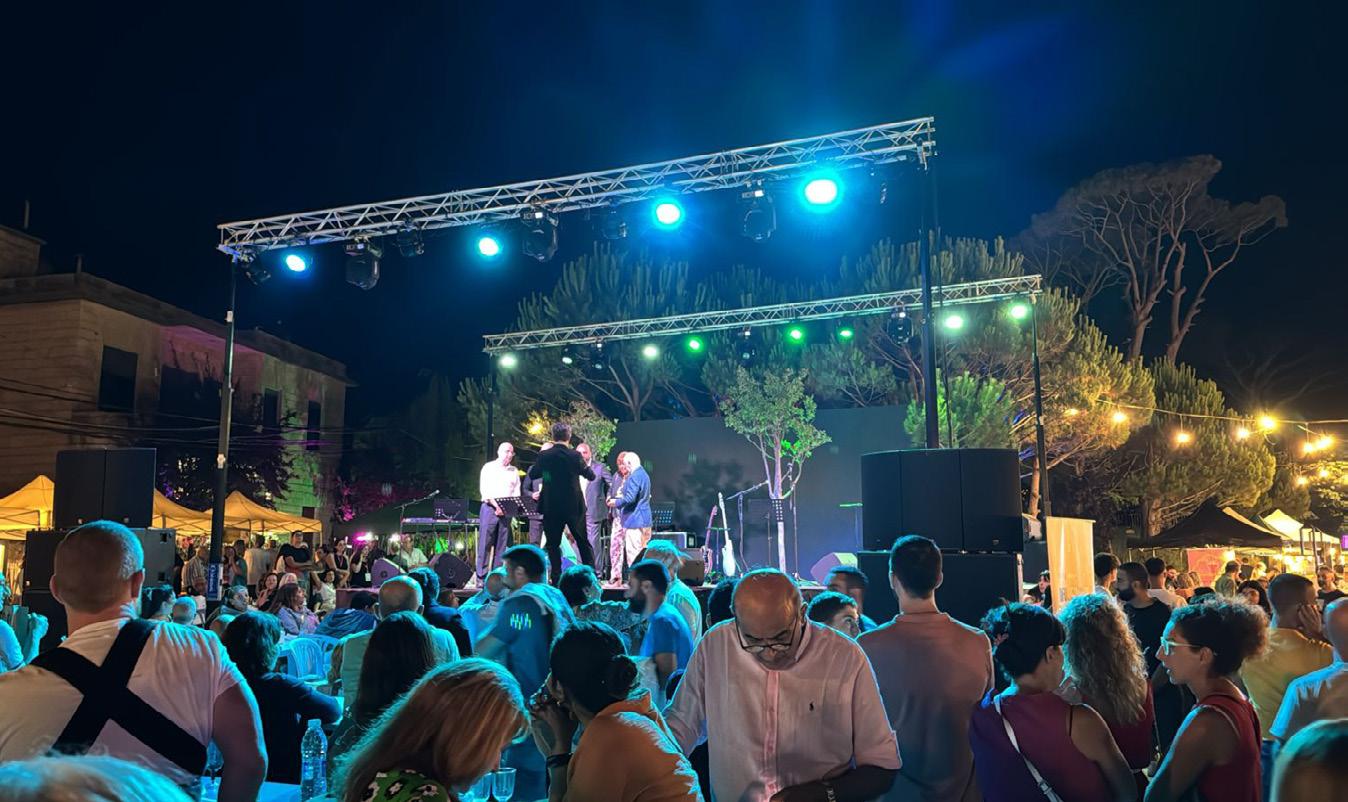
After numerous challenges, including ongoing war threats and various other obstacles, the Dhour Shweir Wine Nights once again achieved resounding success. The Dhour Shweir Wine Nights were not just a competition to identify the best sommelier of Lebanon, and who will become the first sommelier from Lebanon to compete at the ASI Best Sommelier of Europe, Africa and the Middle East, but also a celebration of Lebanese wine culture. Notable guests from ASI included Michèle Chantôme, Giuseppe Vaccarini, Jean-Vincent Ridon, who along with myself, ASLIB president Joseph Mounayer, conducted seven master classes that delved deep into the nuances and excellence of Lebanese wines.
It was a historic moment for Lebanon. Held over three magnificent nights in Shweir
Municipality, the event featured the participation of 21 renowned wineries from across Lebanon and welcomed approximately 25,000 visitors. The highlight of the event was the announcement of Joseph Haddad as the winner, with Silvana Haddad as the runner-up. Both sommeliers also qualified for the ASI Certification Level 1, marking a significant milestone in their careers and for Lebanese wine representation on the international stage.
This seminal event was graced by the presence of Shweir's mayor, Mr. Habib Moujaes, and the Vice President of the Parliament, Mr. Elias Bou Saab, whose support was instrumental to the event's success. The presence of such dignitaries, alongside the participation of esteemed sommeliers and wineries, underscored the significance of the event for Lebanon's viticultural heritage. This gathering not only celebrated the achievements of the country's wine industry but also set

“It was a historic moment for Lebanon. Held over three magnificent nights in Sheir Municipality, the event featured the participation of 21 renowned wineries from across Lebanon.”
the stage for its sommeliers to gain recognition on the international scene.
I, along with all ASLIB members, extend our heartfelt thanks to the Shweir Municipality for facilitating this event and to all the artists and volunteers who contributed to its success. Their efforts were pivotal in making this celebration of Lebanese wine culture a memorable

experience for all attendees. Among the participating wineries, several stood out with their exceptional offerings including Les Vignes du Marje whom showcased a superb white wine that received high praise. Muse du Liban impressed with their high-altitude wines, grown at elevations ranging from 1,750 to 2,137 metres. Chateau Ksara, the largest winery in Lebanon, continued to uphold its reputation as a stalwart
ASI Mag Regional Correspondent
Joseph Mounayer (Middle East)

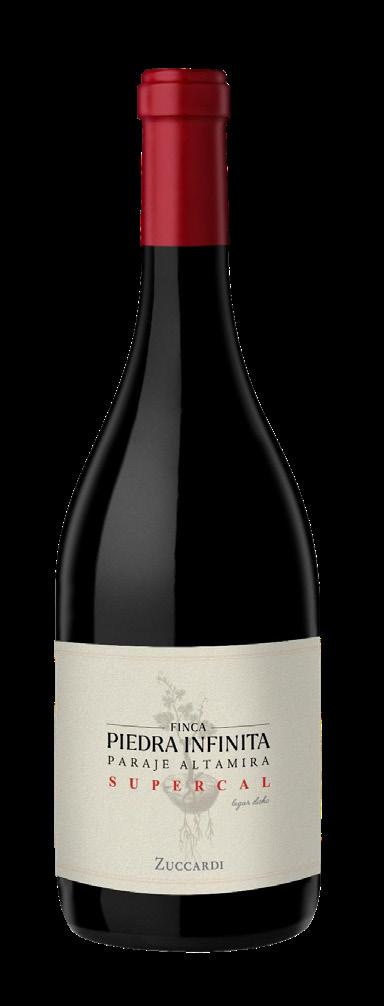
supporter of the association. Divin presented wines that Jean-Vincent Ridon favoyrably compared to some of the best from California.
Domaine Wardy surprised attendees with their mono-varietal Grenache, which garnered significant attention. Chateau Saint Thomas highlighted their highly acclaimed wines from the indigenous grape Obeidy. Finally, Ixsir delighted with their lovely wines from the Batroun region.
With Natalia Torres, ASI Magazine Regional Correpondent, South America
The 2024 Best Sommelier of Chile contest, organised by the Chilean Association of Sommeliers (ASCL), saw Marcelo Arriagada crowned as the Best Sommelier in the country for the second consecutive time. The event was held on May 28 and 29 at the INACAP Apoquindo facilities and brought together the top exponents of Chilean sommellerie in a high-level competition. Arriagada currently serves as the head sommelier at Kappo Masa, the New York restaurant founded by chef Masayoshi Takayama and art dealer Larry Gagosian
Meanwhile, Finca Piedra Infinita Supercal 2021 from Zuccardi Valle de Uco was the only Argentinian wine to receive 100 points in the 2024 Argentina Special Report by critic Tim Atkin. This wine comes from a specific 0.93-hectare plot, located on the west side of Finca Piedra Infinita at Paraje Altamira, Valle de Uco (Mendoza). It showcases the most extreme aspect of the Paraje Altamira soil, which is characterised by large deposits of stones covered with a rich layer of calcareous material.
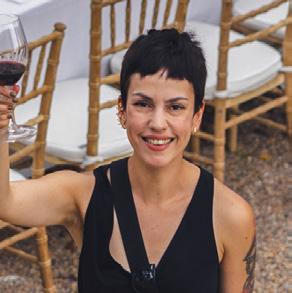
ASI Mag Regional Correspondent
Natalia Torres (South America)
The OIV (International Organisation of Vine and Wine) has announced celebrated French-born, New York-based, sommelier Pascaline Lepeltier has been recognised by the organisation with a 2024 OIV Award for her book ‘Mille Vignes’. The book has received widespread praise since its release.
“A masterpiece that offers a deep dive into the world of wine. It’s a testament to its author’s passion, expertise and commitment to sustainable practices.” Robert Parker Wine Advocate
“Entwining culture, philosophy, history, and science, Pascaline Lepeltier’s One Thousand Vines is nothing short of an astonishing work of genius. This is an essential resource for understanding wine in all its marvellous complexity.” Alice Feiring
“One Thousand Vines is a crucial resource for understanding wine on both a global and local scale, and an essential read for anyone who loves wine.” Jon Bonné


Nepal-born Suraj GC has taken the title of New Zealand Sommelier of the Year 2024. Suraj’s growing passion for wine inspired him to pursue formal education in the field, leading him to study with the Wine & Spirit Education Trust (WSET) and earn certification from the Court of Master Sommeliers. This dedication showcased his commitment to mastering the complexities of wine. In 2016, Suraj’s expertise was further acknowledged when he gained permanent residency in New Zealand. Three years later, he moved to Auckland to take on the role of Head Sommelier at the Park Hyatt Hotel, where his knowledge and leadership skills have significantly contributed to the establishment’s reputation. His achievements have not gone unnoticed, as Suraj was given the opportunity to attend ASI Bootcamp in Malaysia in 2022, where he trained under some of the world’s best sommeliers, which undoubtedly supported his growth, and prepared him for competition. In recognition of his outstanding accomplishments, Suraj has been invited to the prestigious New Zealand Winegrowers Sommit, a sommelier summit in Gisborne, in 2025.

For many wine lovers, sharing a glass with a loved one is a simple pleasure, particularly with a spouse or partner. A University of Michigan study published in The Gerontologist found that couples who drink moderately tend to live longer. Previous research suggested that similar drinking habits in couples lead to better marriages and longer unions. However, it was unclear if aligning drinking habits also brought health benefits. This study is the first to link shared drinking habits to longer life and better health. Analysing data from the Health and Retirement Study, researchers examined nearly 10,000 people over 50 in different-sex couples. They found that couples who both drank lived longer than those where one or neither drank. Moderate drinking, defined as up to 8 drinks per week, was most beneficial, especially for women. Although researchers controlled for certain variables, they acknowledge that the results don’t establish causation and call for further research.
Pernod Ricard, the second-largest Western spirits producer, is selling most of its wine portfolio to Australian Wine Holdco Limited (AWL), which owns Accolade Wines. This strategic move emphasises Pernod Ricard's focus on high-margin spirits, reshaping the global wine market. On July 17, 2024, the company agreed to sell its Australian, New Zealand, and Spanish wine brands, including Jacob’s Creek, Stoneleigh, and Campo Viejo, to AWL. This aligns with its strategy to focus on premium spirits like Absolut Vodka. Although Pernod Ricard will keep its champagne brands and wine operations in the U.S., France, Argentina, and China. The move may lead to more a qualitative approach for the brands but could pose challenges for sommeliers with existing contractual relationships with the Pernod Ricard portfolio of wines.
The provincial government of British Columbia (Canada) has given its local wineries the opportunity to source out of province grapes to replace losses from a devastating polar vortex, this past January, which has led to a 90 per cent reduction in production this year. While it gives wineries some reprieve, its not without challenges. Wineries must sell the wines between April 1, 2025 and April 1, 2026, which poses a challenge to an industry that has a rich history of red wine and traditional method sparkling wine production, both of which require a longer maturation, sales window than the government initiative allows for. With much of the expected imported grapes coming from neighbouring Washington State, it could mean a lot of Riesling bottlings, out of British Columbia in 2025. Low winter temperatures leading to bud and vine damage, has become a regular occurrence in British Columbia, with the 2022, 2023 and 2024 vintages all impacted by winter cold snaps. It begs the question, given the new climatic reality, could the very hybrids the government incentivised growers to remove in favour of vinifera in the late 1980s, be part of the industry’s path forward?


ASI CONTEST BEST SOMMELIER OF
& MIDDLE
BELGRADE, SERBIA NOV 11 - 15